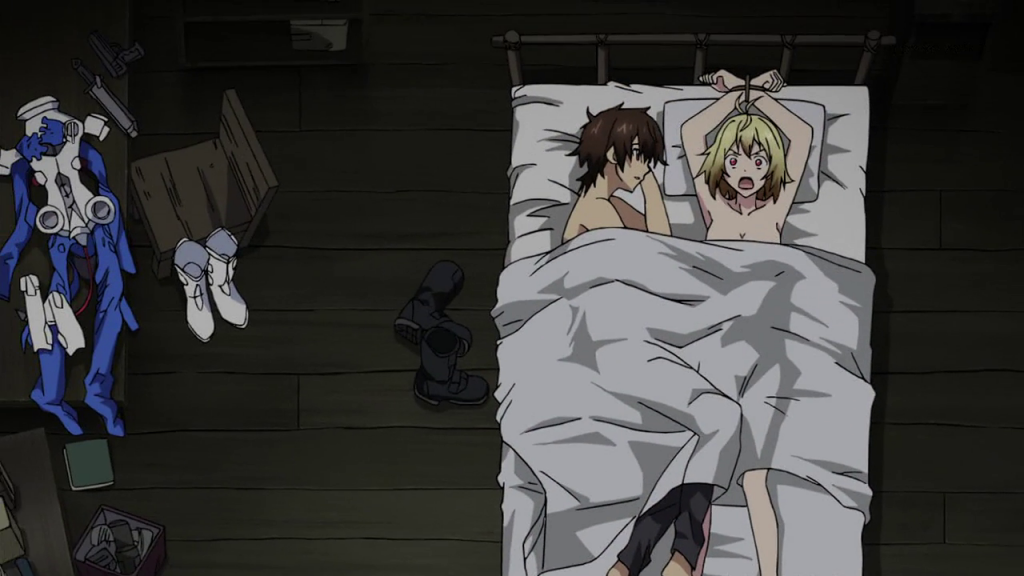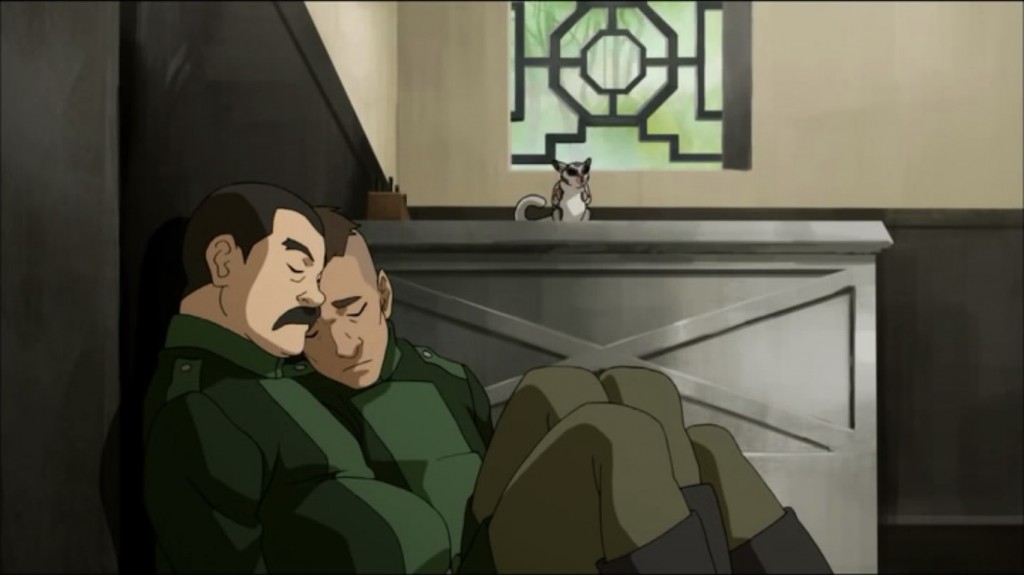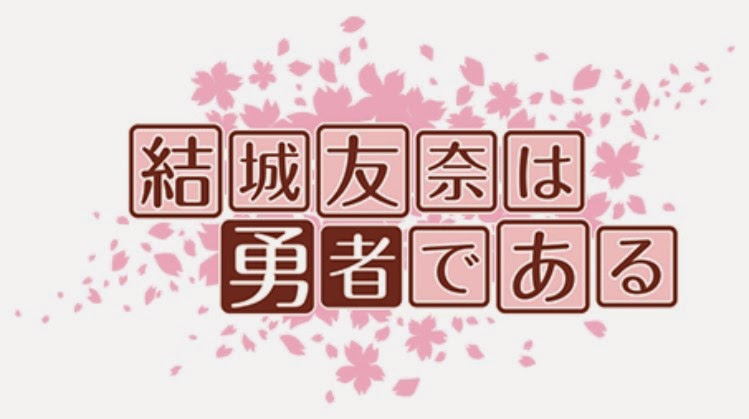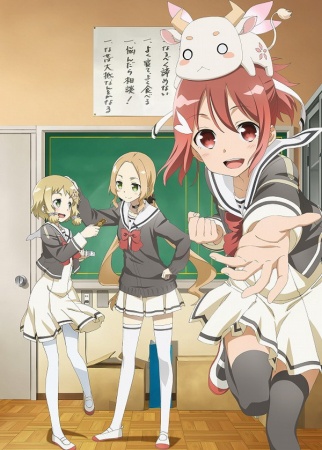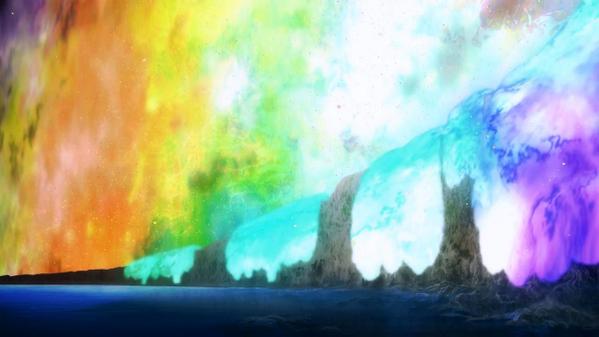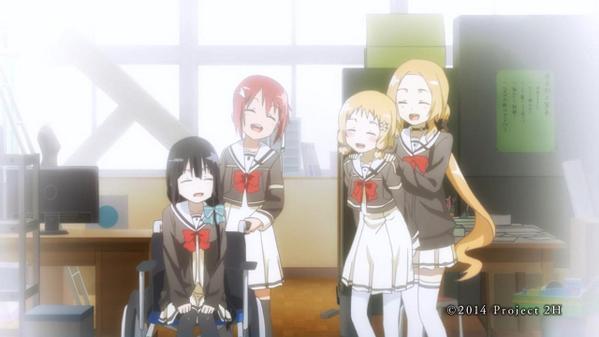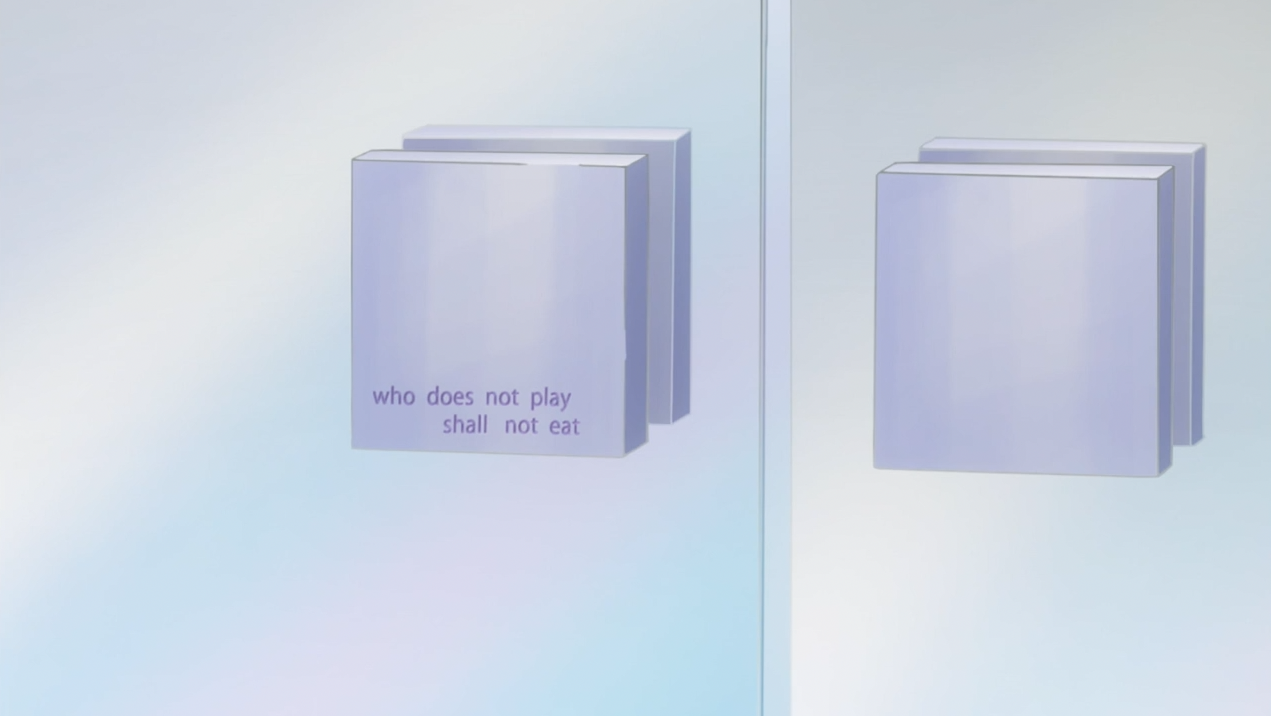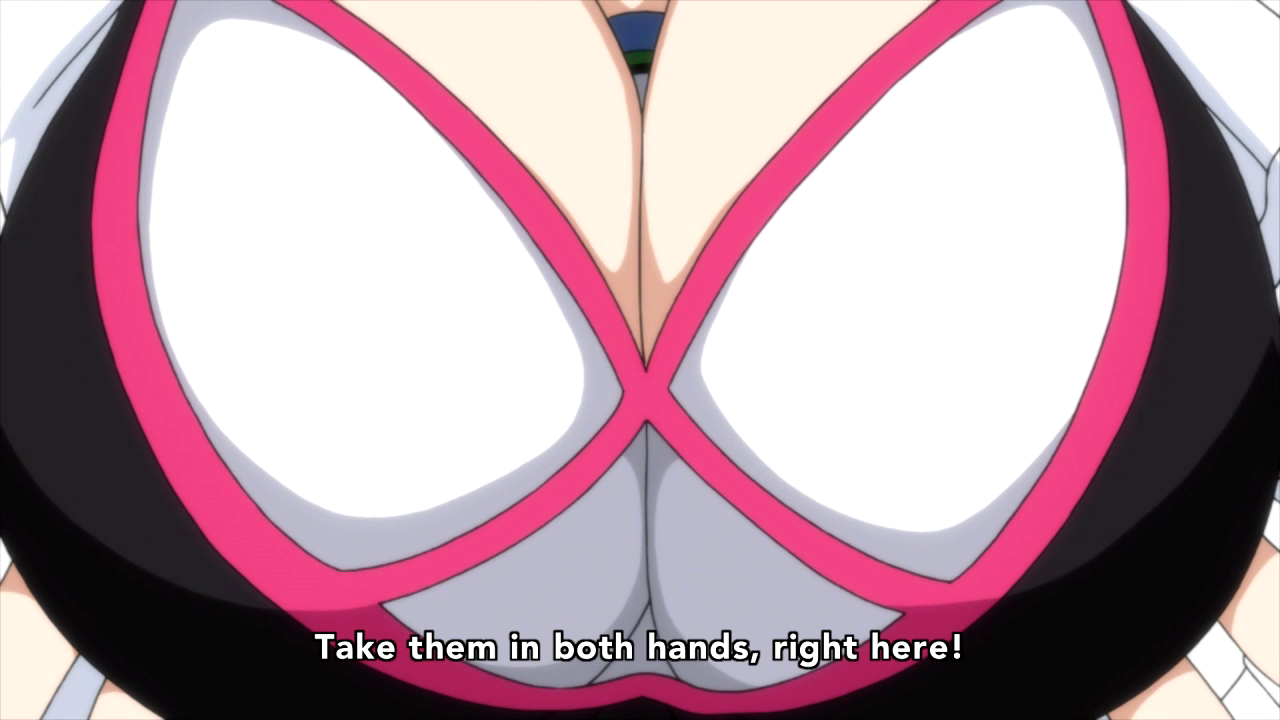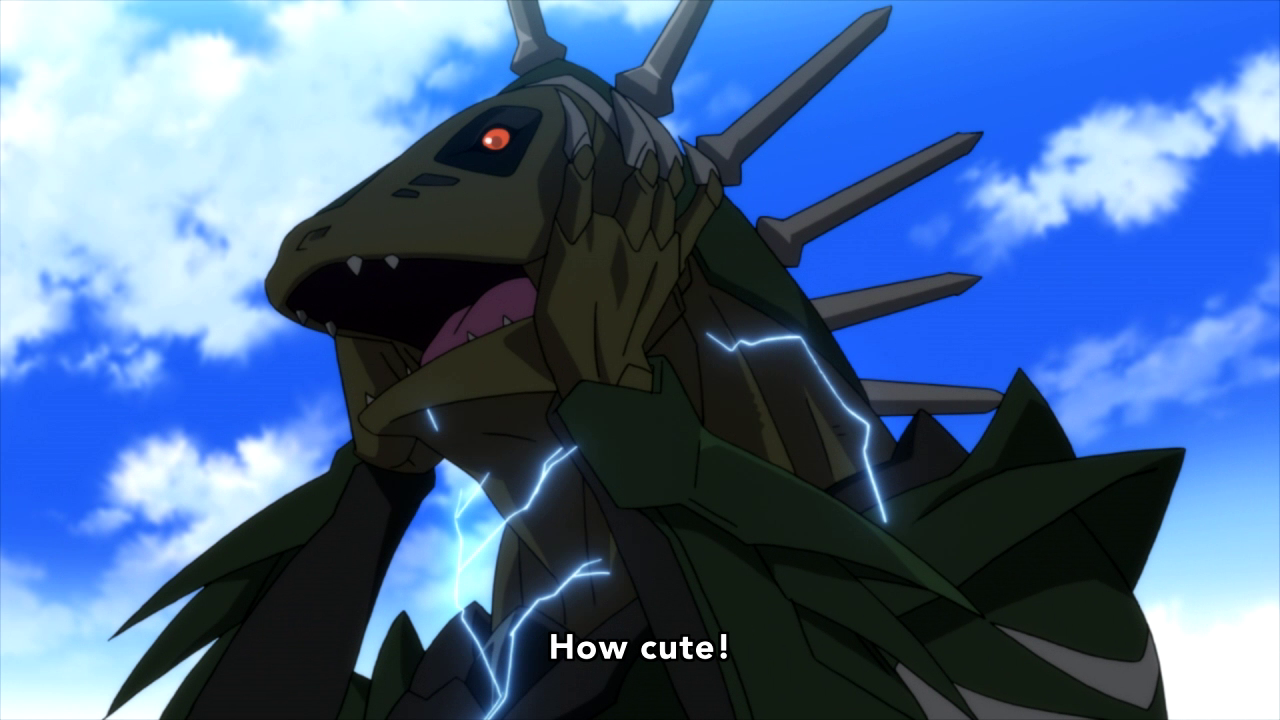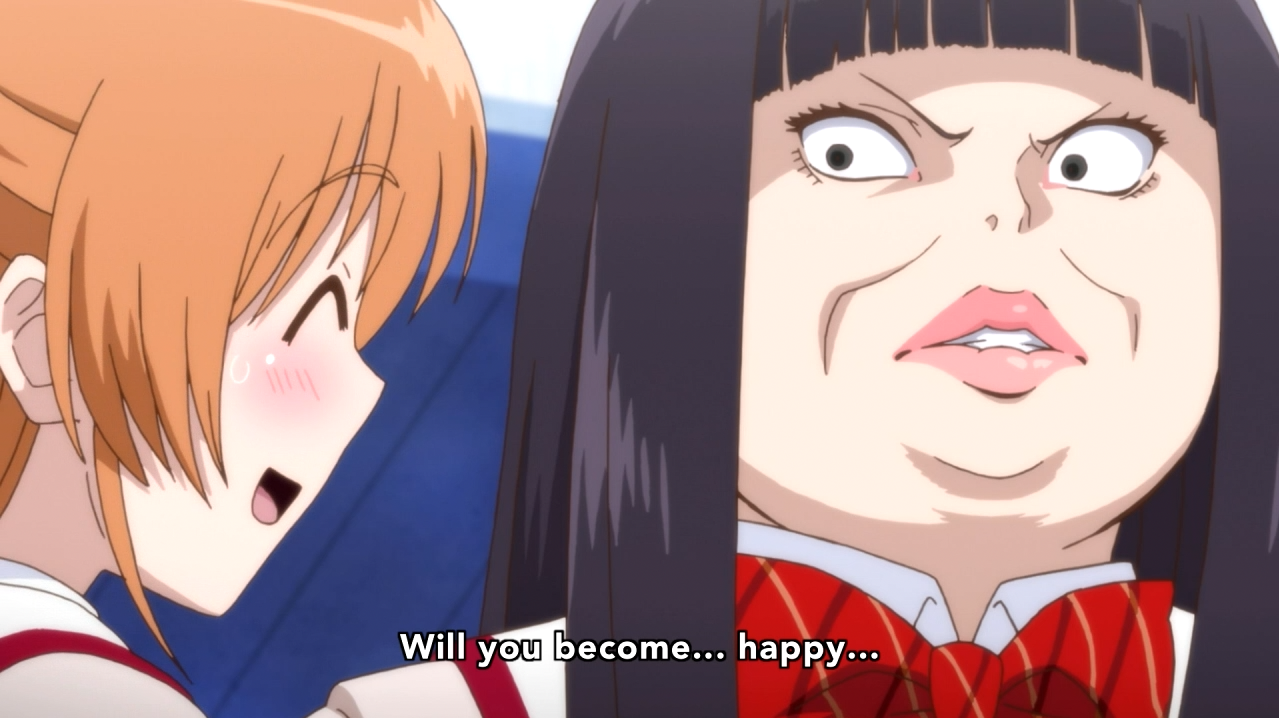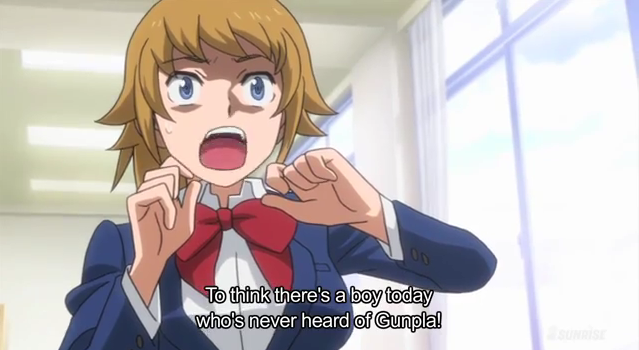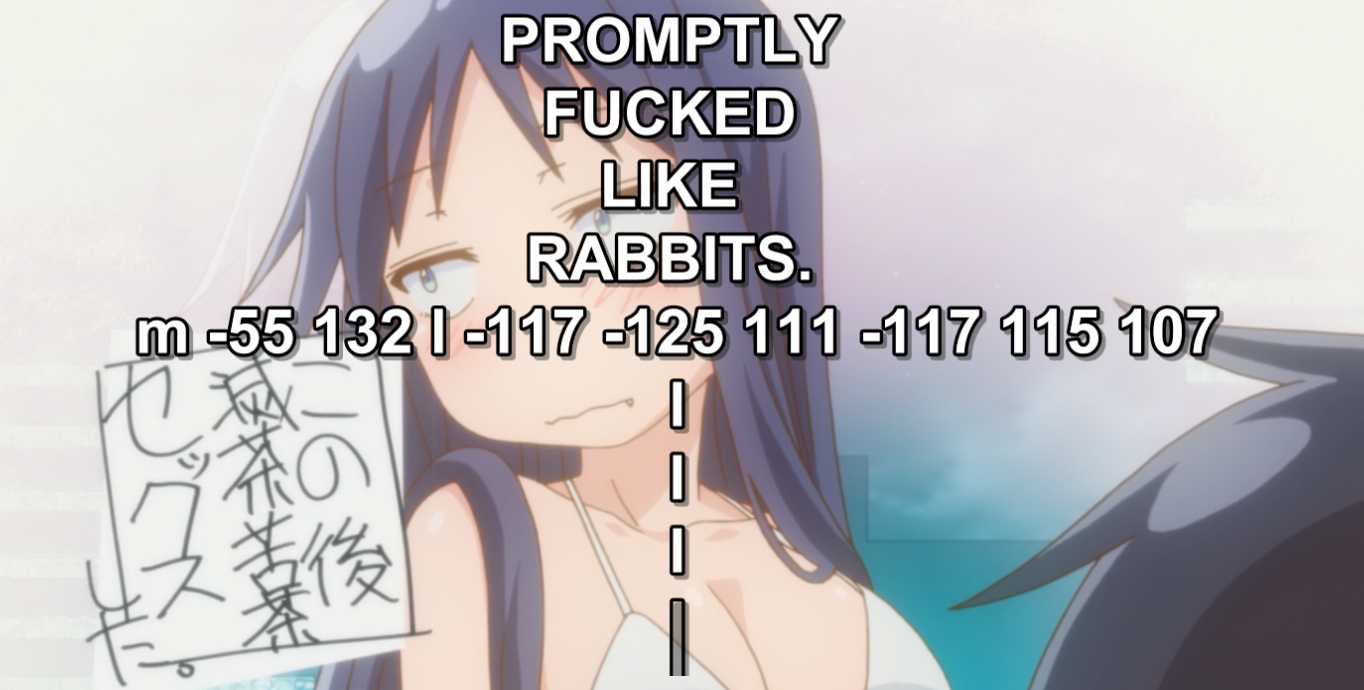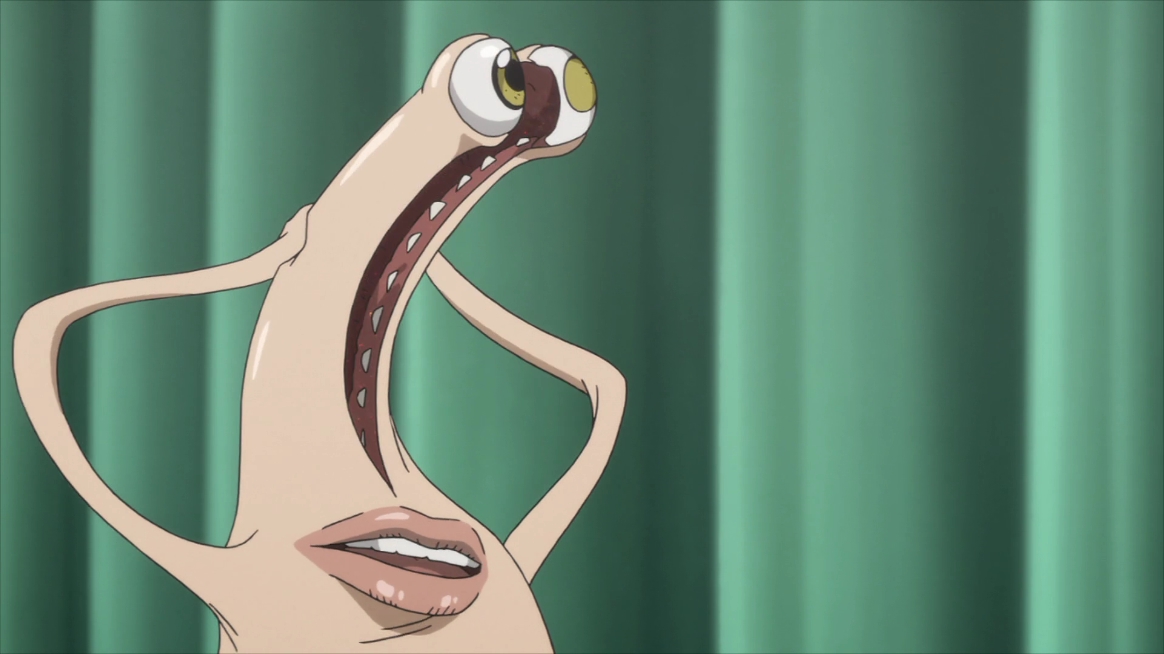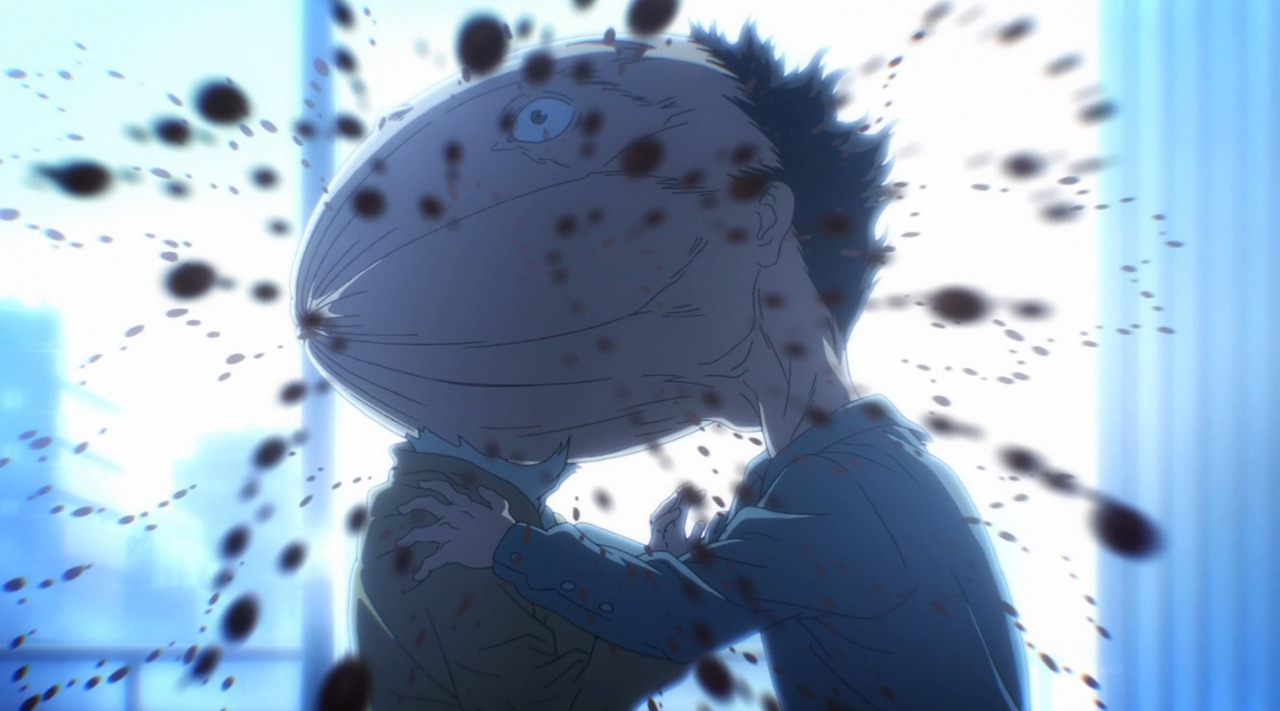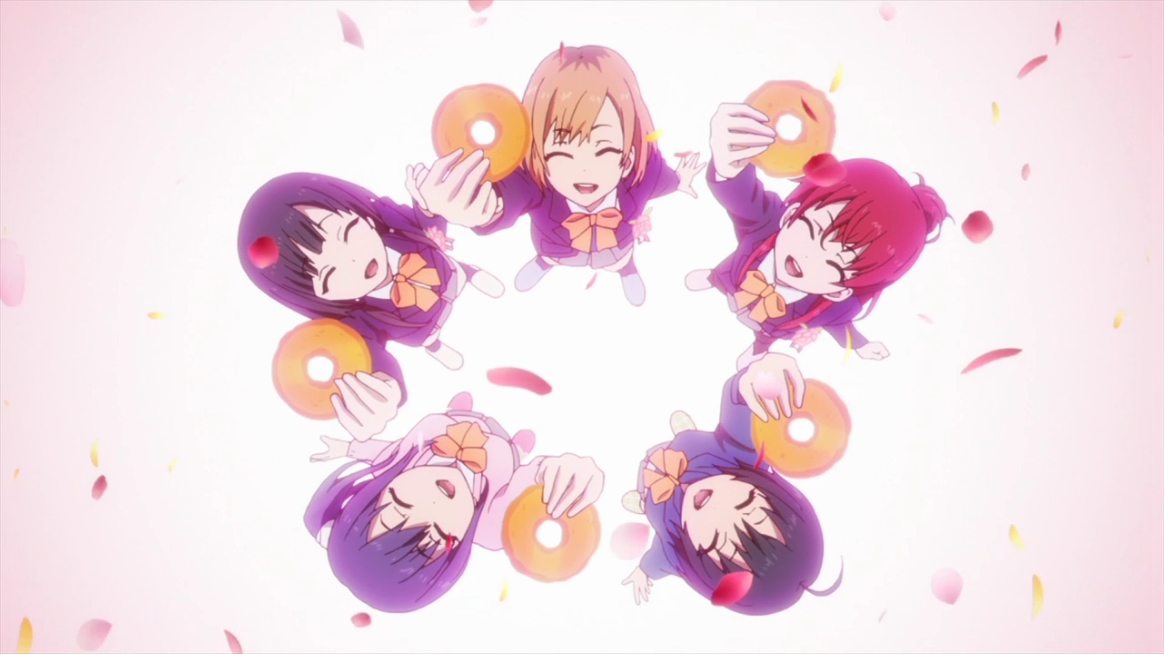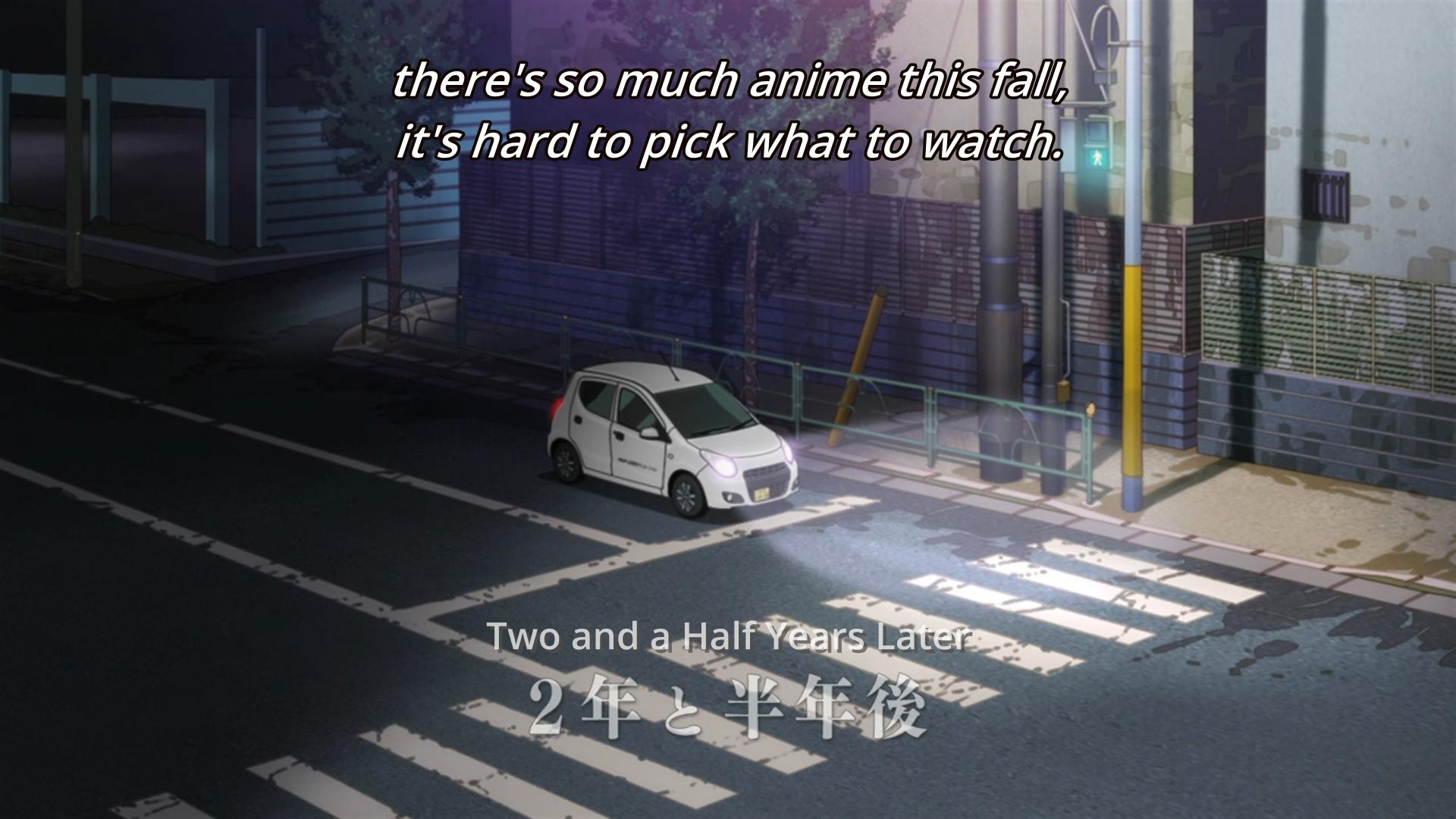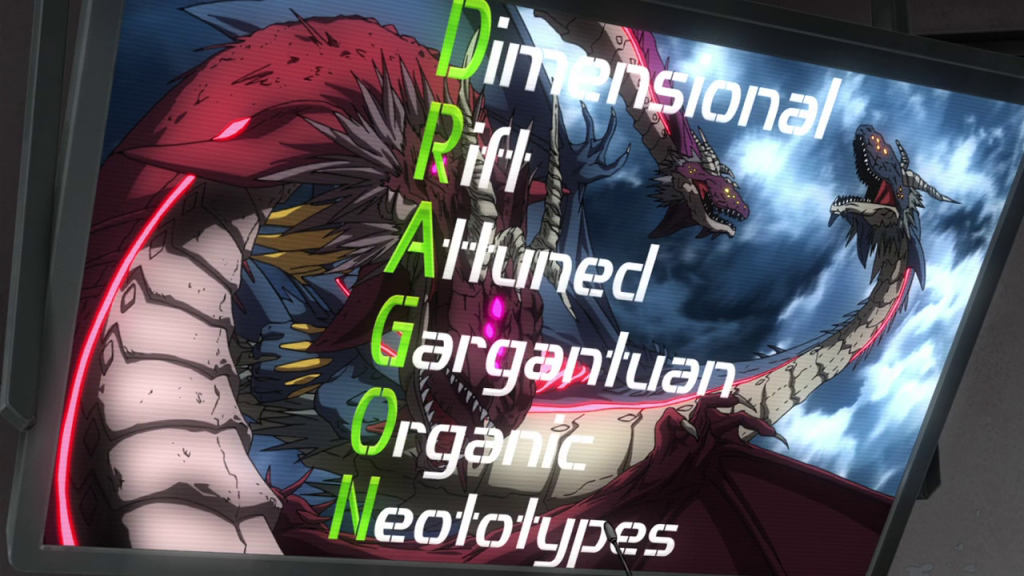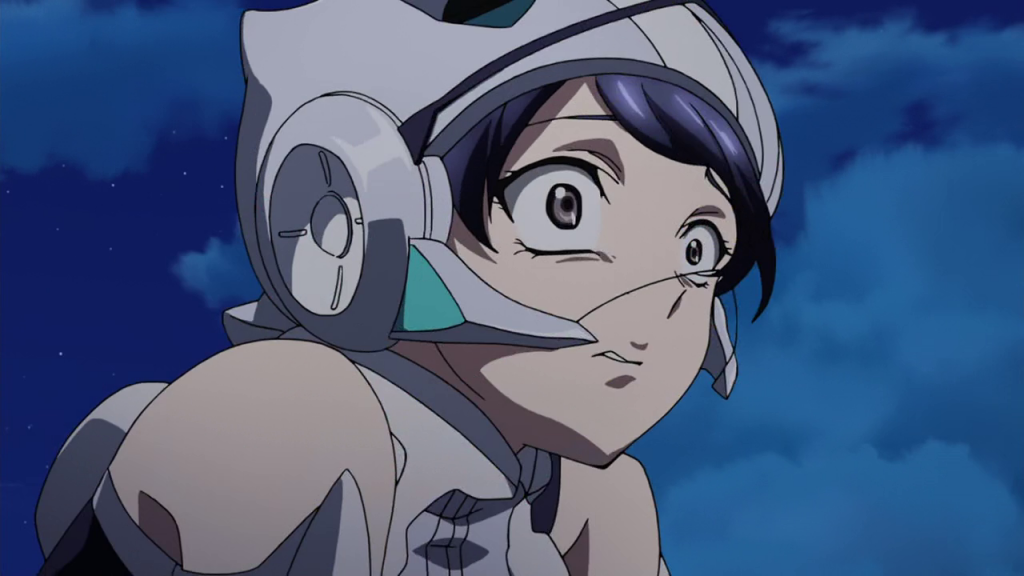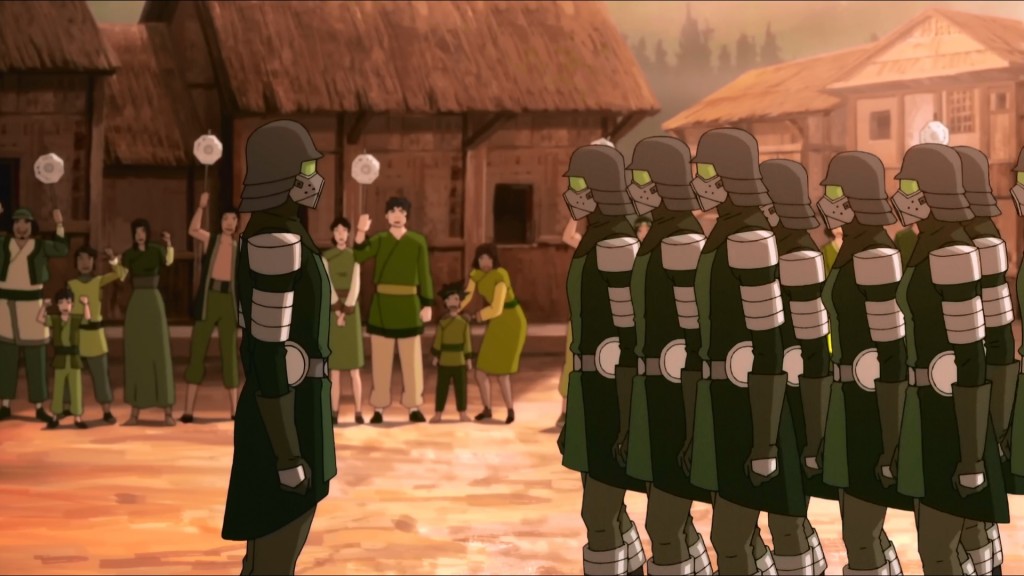Ai Tenchi Muyo!
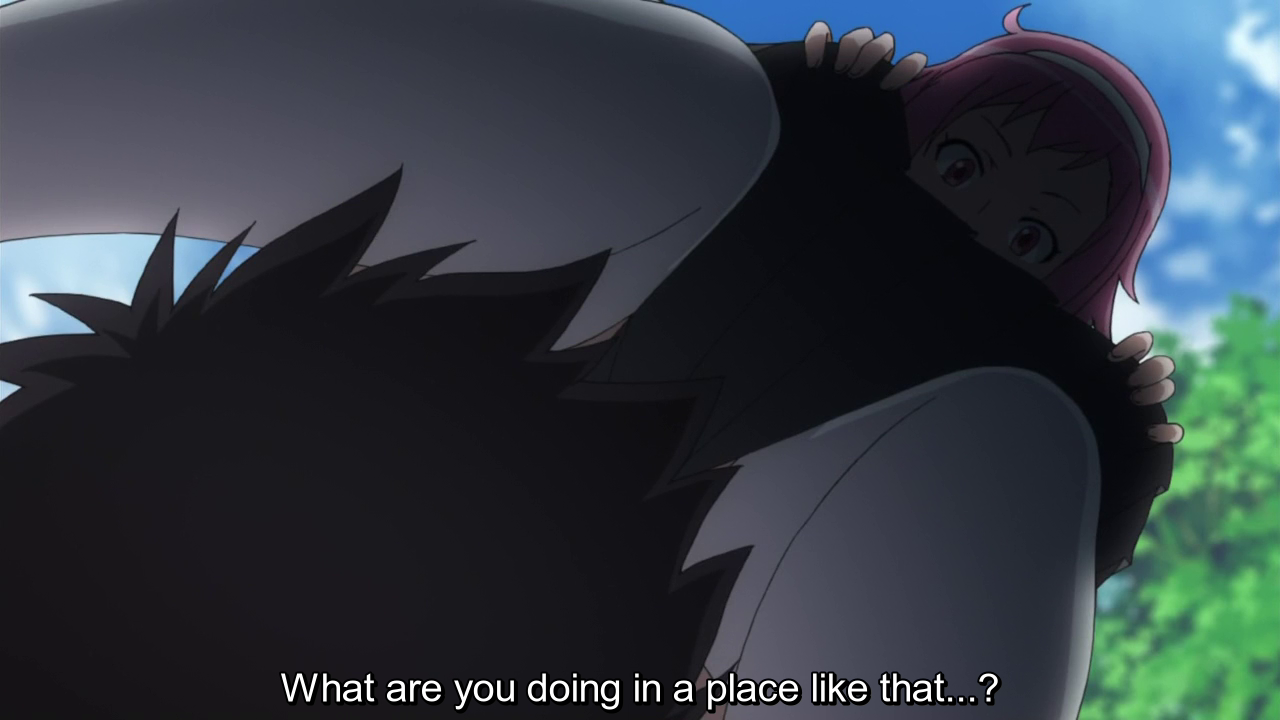
...why wouldn't he?
Oh how the mighty have fallen… Believe it or not, this is the first honest to god 100% legitimate Tenchi Muyo series* since 2004, and what do we get? A four minute gag anime that’s apparently also a tourism commercial for some town nobody gives a shit about. So uninteresting is Ai Tenchi Muyo that current US rights holder Funimation passed on it when it came to simulcasting. It only took me 15 seconds to see why.
So basically the gist of it is at some point during the 15 year gap in-between Ryo-oh-Ki 3 and War on Geminar, Tenchi Masaki has been hired to be a schoolteacher at a kooky all girls school in Okiyama. Exactly why is never explained as the show is too busy on cramming as much humiliation for poor Lord Tenchi that the four minute run time will allow. And while Tenchi humor has frequently been more miss than hit, not a single joke in this episode worked. It felt like I was watching a very bad episode of Negima! instead at times. Also anybody expecting Ryoko and Ayeka’s endless quarrel over Tenchi will be sorely disappointed. They’re not in the episode and neither is the rest of the cast. No Sasami-chan for you pedos! (but she’s like 650 years ol-SHUT YOUR YAP!)
Ai Tenchi Muyo is simply proof positive that the Tenchi formula simply does not work anymore and especially in a 4 minute long format. And yet I keep wondering why AIC refuses to make a new El-Hazard series when the evidence against such a thing is staring me right in the face. — Lord Dalek
*we don’t talk about War on Geminar
Aikatsu!, Season 3
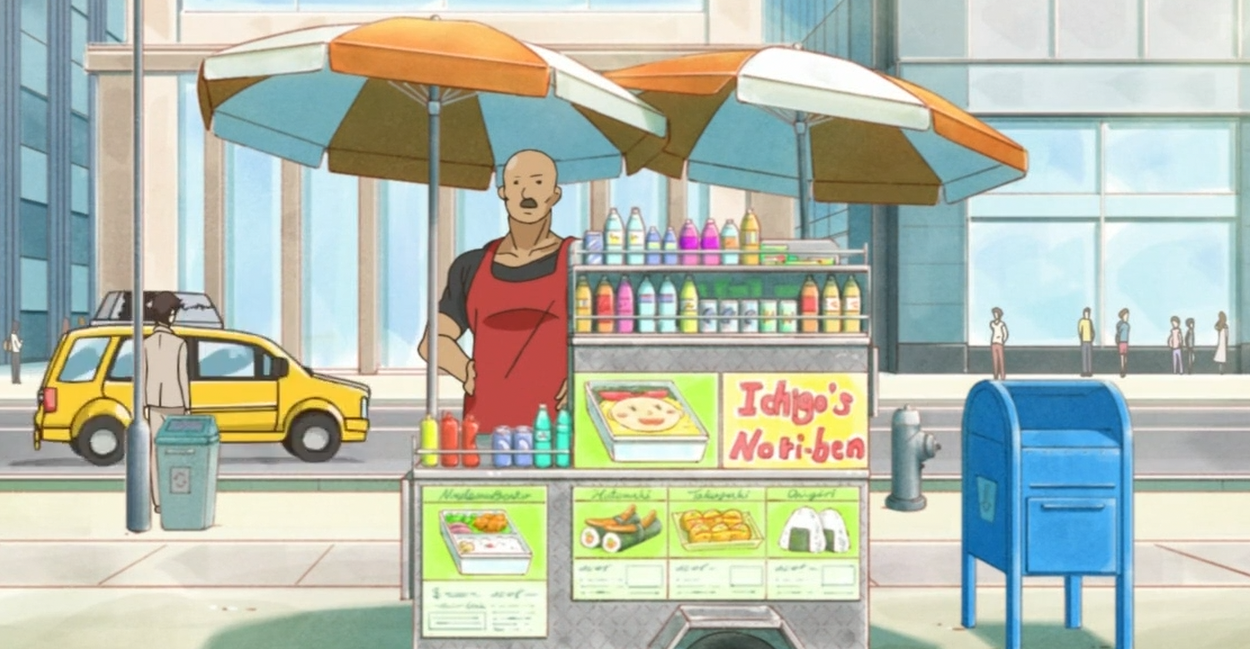
STILL the best idol.
Yay, another girl idol show and another season of Aikatsu. I’m so excited Imma just copy and paste the serious meat from my review of Aikatsu 2. Hell I’ll just use the image from last cluterfuck for this season’s one, since you’re not missing much:
“It’s really inoffensive Bechdel Test passing tripe about doing your best, competing as idols, and gathering cheap toyetic cards so characters can dress up and perform a rote pop song with rote CG work. You can do a lot better, you can do a lot worse, or you can just do. And nobody likes to just… do in this regard. Leave this to the Japanese girls demographic to buy, trade, and sell with each other at whatever Japanese toy store nearby.” — The Juude
Akatsuki no Yona
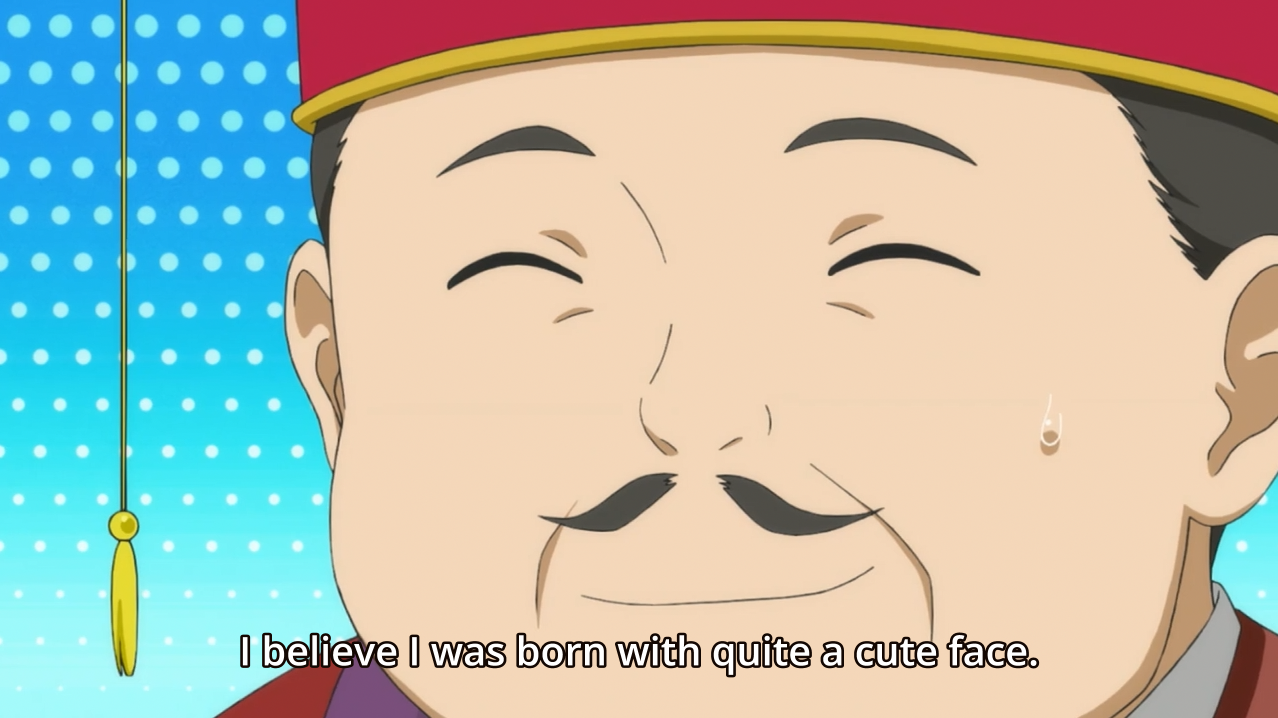
This one is mildly interesting. I can’t say I hated it, but I didn’t find it too appealing, either. The story is pretty straightforward and typical of the fantasy genre: the princess’ father is murdered by the man she loves, then she apparently goes on an adventure with a bunch of dudes for some reason (presumably to hunt the killer down). There really isn’t much else to say about this episode in terms of story, though it does do a fairly good job of establishing the series as one containing both silly and serious moments. That said, I found neither the drama nor the comedy particularly engaging, and the main character, Yona, didn’t strike me as too remarkable, either. She’s immature, not very likable, and wants to screw her cousin, but given the nature of this anime, I’m sure she’ll grow over the course of the series into someone who’s actually cool and acts like an adult. Like I said: typical.
And there’s really nothing wrong with typical. If you like this kind of story, by all means, watch Akatsuki no Yona. The visual production is competent enough – a lot more so than I expected from Pierrot, for what it’s worth, – and the OP is fantastic. I’m not a fan of shoujo where the female hero is nearly worthless and needs men to fight for her, but I know this appeals to a lot of people, and I can respect that as long as the writing isn’t explicitly misogynistic, which it isn’t here. Much like spring’s The World is Still Beautiful, there’s nothing inherently wrong with this show, but I’m clearly not part of its target audience, and I can’t think of anything else to say about it.
Akatsuki no Yona is fine, but it doesn’t elicit much of a response from me, good or bad. Others may feel differently, but for me, this show is just there, right in the middle of the road. Maybe you’ll like it… or maybe not. — Foggle
Amagi Brilliant Park
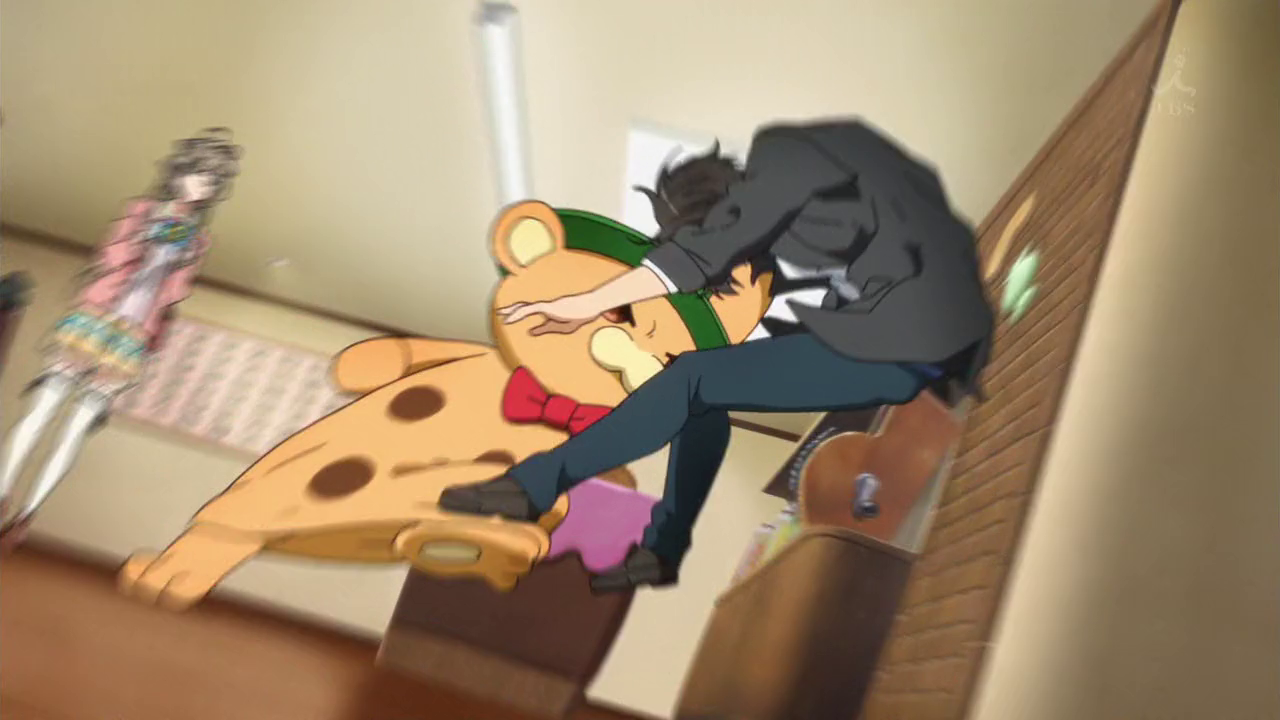
Well this is a fine how do you do...
As a huge fan of Full Metal Panic! and a huge, uh, not-fan of Kyoto Animation, I was anticipating Amagi Brilliant Park‘s airing like one anticipates the onset of diarrhea after eating a few too many pieces of spicy Korean BBQ. Thankfully, my disgusting and oddly specific (don’t ask) fears were largely unfounded, as Amagi surprisingly turned out to be one of my favorite premieres of the season. This first episode is filled with wit, originality, and most importantly, heart. What I ignorantly assumed to be yet another attempt soulless attempt by KyoAni to make bank off of animating obnoxious light novel trash turned out to be a well-written comedy with likable characters – something we can always do with more of, especially when it comes to anime.
I had a lot of fun watching this episode, and laughed quite a few times at the downright abysmal state of the titular Amagi Brilliant Park, which ended up being about as “brilliant” as a decommissioned hospital. Isuzu’s deadpan descriptions of the events being wonderful and joyous are simply hilarious, as are the terrifying talking animatronic flowers and the morbid rat-shooting carnival game. The other elements of visual comedy on display are equally well done, and I found it difficult not to hold a smile throughout the majority of Amagi‘s 24 minute run time, though one bit near the end annoyed me a lot. Putting that aside, writer Shoji Gatoh once again gets a lot of mileage out of including an oddball protagonist who manages to be charismatic instead of just “quirky” like a John Green or Diablo Cody character. Seiya’s narcissism is often humorous and even charming in a sense, which went a long way toward assuaging my fears for this show within seconds after the OP ended.
Another thing that reminds me of Gatoh’s work on FMP is how well his script displays knowledge of both the minimum and maximum limits that comedic writing must avoid in specific situations. The cold open is a good example of this; Isuzu threatening to shoot Seiya if he doesn’t go to the park with her walks a fine line of comedy that is dangerously easy to step off of, and only manages to be funny because every single detail is executed intelligently. If Isuzu’s gun wasn’t real, or if there wasn’t a gun at all, it would have just been bog-standard anime humor. On the flip side, if she had actually shot Seiya instead of the wall, it would have fallen too far into the realm of unrealistic silliness to be funny. Instead, we get a fantastic comedy bit tinged with absurdism that goes a long way toward leaving a good first impression. There’s also a callback joke later on in the episode that only works because of the way this scene ended up playing out. Comedy is difficult to write well and has many intricacies, but once again Gatoh proves that he knows exactly what he’s doing.
The production values are all quite nice, and it looks exactly as good as you’d expect from Kyoto Animation’s excellent team of animators. Queen Latifah’s (ha) character design aside, the visuals are all very pleasing to my eyes – especially the coloring, which deserves special praise. The OP is easily the most enjoyable of the season so far, unless you count DATABASE DATABASE WOW WOW. Also, fans should keep watch for the clever Full Metal Panic! references scattered throughout, which imply that Amagi actually takes place in the same universe as FMP.
Overall, this was a lot better than I expected. It’s very funny, and much like Hyouka before it, proves that Shoji Gatoh’s talent hasn’t gone to waste since he was hired by KyoAni. Amagi Brilliant Park comes highly recommended, even to FMP diehards and KyoAni detractors like me. — Foggle
Fifteenth Opinion!

This season on Date-A-Live...
In the near future, undercover Mythril agent Sosuke Sagara is assigned to protect perfectly average tsundere Kaname Chidori from various Russian and Chinese assassins after her ability to understand the so-called Black Technology…butnoneofthatisimportant. THIS is the story of how some random guy ends up on a date from hell, after a rather cold and aloof transfer student shoves a shotgun down his throat!…oh boy. Said hell is the not-so brilliant Amagi Brilliant Park. A decrepit underwhelming void of flaking paint and broken dreams. After being thoroughly unimpressed by Amiburi’s dismal facility in the shadow of a much more entertaining love hotel, our hero Seiya finds his “date” with the increasingly deranged Isuzo was actually an employment ploy. The current owner of the park is a “real princess” from the…oh god… magical fairy kingdom of Maple Land. If the park does not receive 250,000 guests in the next three months, our group of fantasy land characters/chuunibyo-ers will be evicted from the park and forced to get real jobs. As a free bonus, Seiya gets some sort of mind reading ability and finds out where Isuzo really keeps that shotgun. Ooooooooh my!
Ostensibly set in the Full Metal Panic universe…or at least some version of it…Amagi Brilliant Park is a show I say with some authority that none of us here at AR were looking particularly forward to. Seriously, its been almost a decade since TSR, and THIS is what you have to show for it KyoAni/Gatoh? I mean really. To add insult to injury, the first episode which was supposed to have aired last Thursday ended up getting delayed four days so that TBS could air a volleyball game instead. Furthermore, unlike Swimming Anime, KyoAni elected NOT to sell Crunchyroll the rights to simulcast this show. If there was any better endorsement of a show’s lack of quality that would be it right???
Wrong! The show is actually pretty good! SURPRISE!
Maybe I set my bar a little too low but I found Amagi Brilliant Park to be charming in a socially awkward yet oddly alluring way. The theme park is such a pathetic disaster that you can’t help but laugh at its self-inflicted futility. Its only in the last minute or so that the episode finds a way to unravel a bit with the revelation of magic powers but then there would have probably not been any sort of concept for this show to hang on to if they hadn’t. Ultimately it may not be a great anime, but Amaburi is definitely a pleasent surprise in a season that’s by and large been one of the worst on record. — Lord Dalek
Celestial Method

KAWAIIIII!
Created by Naoki Hisaya (who gave us Sola and Kanon) and produced by brand new studio 3HZ, here comes the story of two young girls and their friendly reunion.
A field of sunflowers starts us off as a young girl named Nonoka coming to a Lake Kiriya City, the main setting of the story. She once lived there with both parents and had met a mysterious girl Noel. When she gets back with only her dad, she finds the city has a big saucer hovering over it. Despite not being a hostile presence, it is still felt by the people in the city. Nonoka and Noel meet up again, but Nonoka doesn’t remember her initially, having some kind of selective amnesia. All the main characters are linked by a promise from long ago as kids at an observatory. Granted, not all their names are mentioned here, but I’m sure that will be told to us in good time and those characters given their time to shine and develop. However, her mother is a touchy subject for Nonoka-she isn’t present save for a single framed photo so I’m sure that will be part of the emotional drama for the story. Considering the other stories this author has done previously I expect a lot of ‘THE FEELS’.
Watching episode 1 was a soothing and calm watch for me akin to listening to Erik Satie’s Cinq Nocturnes, with the just right amount of drama in the second half. Anyone wanting a moe fix this season, you can’t go wrong here. It’s pleasant enough. Animation is decent for a first outing, though I will note that the background art is very pretty and quite impressive for a studio’s first animation production. The character designs are cute and moe, though made by QP: flapper who also did similar work on MM! as well as working on Girl Friend BETA this season in addition to this show. I will watch this just to see what happens after this initial mystery.
OR
TL; DR-Noel’s such a moe cutie it hurts lol, excuse me while I get my insulin. — The Eclectic Dude
The Circumstances in My Home’s Bathtub

The Circumstances in My Home’s Bathtub is an ideal fairytale yaoi, as it puts me to sleep in lukewarm water.
Okay, that seems harsh. I will not allow this show to become a sponge to watery criticism. The Circumstances in My Home’s Bathtub isn’t as sleep-inducing as the title may make it seem – incredibly sleep-inducing, am I correct – and a little fun in the tub never goes amiss. This show is pure gold, like a golden shower. I want the water, which represents the show, to splash all over my face.
Once you pull the plug, I wouldn’t recommend playing with this little ducky, or getting wet in its fluids. It is not very calming, and it leaves you wrinkly, making you wonder what you were soaking in. It may appear and feel relaxing at first, when you swim around in the steamy, hot, yaoi-hinting water…but underneath the soapy suds this show offers little luxury flowing around its casing. The water doesn’t stay hot for anything longer than five minutes, and 30 seconds of those five minutes is scolding hot, leaving the impression of grimness and burning flesh. The opening to this little bathe feels like a 3rd degree burn that leaves you laughing in both surprise and pain.
As you immerse yourself in the warm, alluring water, you sink lower and lower to the base of your bath. Your lungs fill with water slowly as it drowns you. This drowning sensation is this yaoi, and the disappointment represented by the water is interestingly, the lack of any yaoi. This yaoi isn’t worth absorbing into your skin, washing you of dead cells. The dead cells merge with the water in the shape of two men: one entirely human, the other a merman, and they dissolve into suds. Those suds transform and shape around your wet, dripping body, and cover you from head to toe. They descend into your flesh, mutating you into something not human. You feel your legs stick together, the flesh combining and becoming one. Disgusting, bloody fins grow from the ends of your new, single leg, and bright blue scales pop out of every inch of it too in response. Your new gils disrupt the arrangement of your scales and rip them apart. You bleed and scream in immense pain.
Your hair grows rapidly and changes colour to a blazing, golden yellow. You touch your hair; it feels greasy with abundant amounts of hair gel, and sharp from the amounts of spikes. You crawl painfully from your bathtub to the nearest mirror, blood trailing behind you.
You look in the mirror.
You have become Wakatsu from The Circumstances in My Home’s Bathtub. — Mahb Schneider
Cross Ange: Rondo of Angel and Dragon

...yup I'm out.
After watching Cross Ange, I must rescind my piece due to objections over content. — Bloody Marquis
Second Opinion!
In my time as an anime blogger I’ve seen some shit. I’ve seen a guy go down a waterslide filled with yogurt on an inflatable banana. I’ve seen a perfect normal school girl get manipulated into turning average business women into grinning retards to be sold into sex slavery. Hell I’ve seen a gaggle of deranged manchildren try to fap over tortured street urchins while a maid turns out to have a vagina for a mouth.
AND YET…
Cross Ange is a thing
A
BAD
BAD
BAD
THING.
This is a show where a baby gets put in a box because her name is “Norma”!
This is a show where a prissy blond princess gets horribly raped with cattle prods because she’s also named “Norma”!
This is a show where the evil brother of said princess proceeds to rape his other sister…who is like nine years old!
This is a show where suddenly we cut to a yuri harem for all of two seconds FOR NO APPARENT REASON!
This is a show where Mitsuo Fukuda finally gets his revenge on me for every bad thing I said about Gundam Seed Destiny. Oh god… please… I take it back… OH GOD NO.
This is a show I will never watch again. EVER. -151541616165432164321616532165321632161/5 — Lord Dalek
Third Opinion!
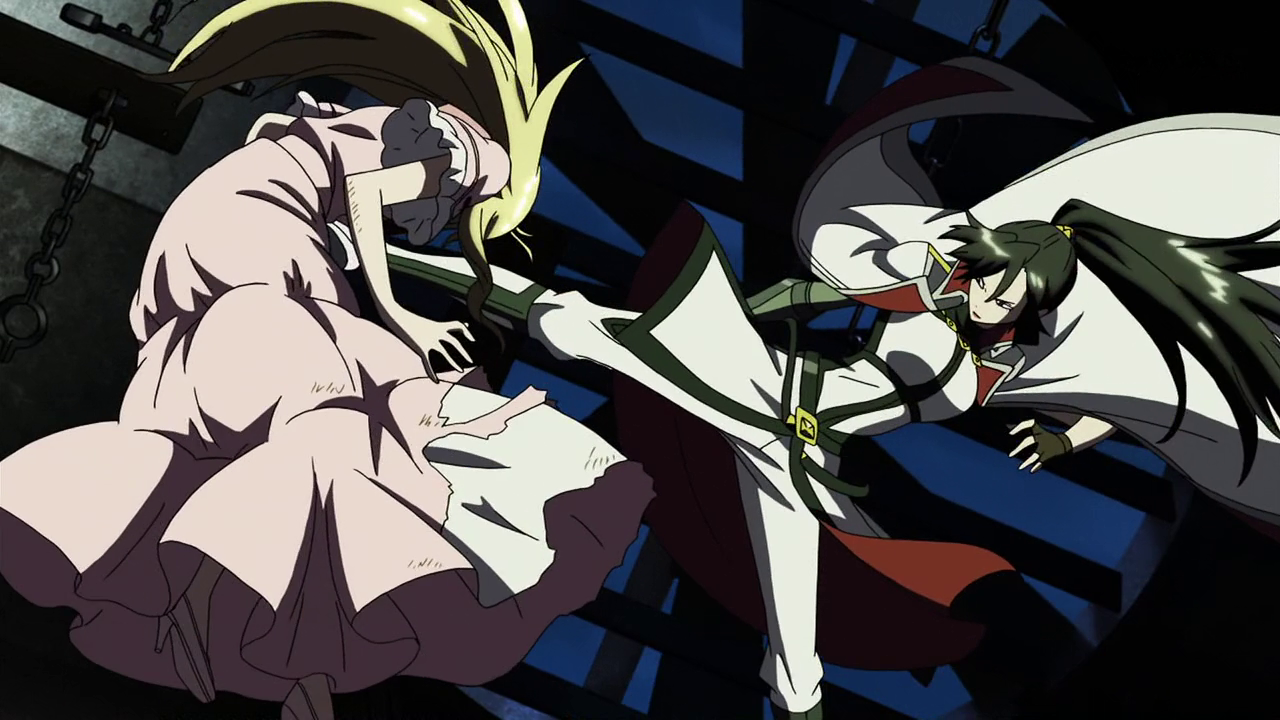
OH MY GOD! What the hell did I just watch!? And why do I want to watch more Cross Ange!?
After a strange aerial battle between dragons and a bunch of scantily clad women in giant CG mechs, we’re then treated to the story of a perfect world. It is a world brought about by the Light of Mana, and it has made everybody happy, except for the Norma. They are not allowed to be happy since they do not have Mana and are considered less than garbage. Even our protagonist, Miss Not-CagalLacus (aka Ange) thinks so, spouting very unsettling beliefs about eugenics without the slightest bit of irony or hate. Unfortunately for her, SHE is also a Norma, and after a botched Baptismal ceremony she becomes universally reviled (which was kinda well-deserved), then gets an anal cavity search at the end. I am not shitting you. THAT is what happened.
I don’t even know if I should expect nothing less from the same Creative Producer who was behind the direction of Gundam SEED and SEED Destiny: Mitsuo Fukuda. Sure I expect him to be a bit narcissistic and use the OP and animation to hearken back to his previous series, but anal cavity search is a rather brave new world for him.
This show is bonkers. I mean yeah we get our usual “Special people vs. Not Special people” spiel that Fukuda used in SEED, but here it is established so quickly, without nuance, and with such incredibly high-strung emotion. Hell the first instance takes place RIGHT AFTER a spirited hover lacrosse game where our inadvertently genetic supremacist heroine spouts about unity, good sportsmanship, and friendship. The tone is absolutely everywhere, and even the narrators for the Next Episode Preview admit to that when they just rant about how baffling it is. It’s crazy! It’s racy! And I just can’t help but be intrigued if baffled in wondering how it’s all going to go down. Will it be just as big a blaze of inglorious cacophony as the first episode, or will it just fizzle out and go into rote?
Say what you will about Fukuda, he’s so incredibly bombastic and ambitious that even when he’s directing (or producing here) a train wreck, your head will never turn away. Just keep Morosawa out of the writing room and maybe we’ll have the greatest guilty pleasure of anime in the 2010s. — The Juude
Fourth Opinion!
Cross Ange is, by far, the worst anime of the year. It’s been a long time since I’ve seen a series so utterly devoid of good aspects, but this one tries its damnedest to show us just how low animated television can sink. If you’ve been jonesing for a mecha series that steals concepts from one of the worst Gundam shows of all time, is populated entirely by loathsome characters, and handles subjects like racism and sexual assault with all the gracefulness of a sledgehammer, then, well, maybe this whole “fiction” thing just isn’t for you. Or I guess you could watch Cross Ange. But I’d say giving up on fiction entirely is preferable.
The main character of this piece, Ange, is about as detestable as a protagonist can be. Like, “supports genocide and putting so-called subhumans into concentration camps” detestable. But later, it’s discovered that she’s actually been one of these “mongrels” (a Norma) the whole time, so after witnessing her mother’s death firsthand, she’s quickly thrown in prison and promptly anal raped. Now, I’ve always hated rape scenes in general, but I can sometimes live with one if it’s executed well – especially if the story has previously “earned” it. This can be accomplished by featuring writing that is generally well-done and not prone to using troubling concepts for shock value or titillation. Of course, in keeping with the tone of the rest of the episode, Ange’s anus being destroyed by Jill’s robot arm is absolutely played for fanservice. It’s also immediately followed by sexed up shots of minor characters being naked and fondling each other for no reason, as well as a few seconds of her writhing on the floor, broken and bloody. And then right after that, there’s a next episode preview which is entirely played for laughs.
The most vile thing about this scene is the fact that the audience is clearly supposed to believe she “deserved it” due to her hateful, racist ideals. Indeed, the majority of this episode focuses on making Ange seem as contemptible as possible, presumably in the hope of making it easier for the viewer to pop a boner to her suffering. These people can then deflect the fact that they were turned on by someone being sexually assaulted by saying, “hyuk hyuk karma’s a bitch ain’t it?” “But Foggle,” I hear you say, “surely no one is awful enough to actually believe that somebody deserves to have their anus painfully violated against their will,” to which I will reply that I have already seen multiple people provide this exact argument on various message boards and social media websites. Indeed, Sunrise’s attempt to reconcile cheesecake rape by way of having it happen to someone unlikeable actually worked.
Aside from being misogynistic and disgusting, the rape scene at the end of this first episode is also disgraceful because it appears to be part of a misguided attempt at character building, and also legitimately seems intended as a springboard for the rest of the storyline henceforth. That said, comparing Cross Ange to something like I Spit On Your Grave would be doing the latter film a disservice, as the writing of this anime had already sunk to sub-Troma levels long before the eye catch. It begins with some truly wonderful singing and a mecha battle that sports an ungainly focus on the sexy outfit Ange happens to be wearing at the time. She fights some D.R.A.G.O.N.s (regular ol’ dragons that are apparently referred to with an acronym for no fucking reason), the Gundam Seed OP plays, and then there’s a lacrosse game because something something world building. But the best part of this installment, and perhaps the funniest scene in any anime this year, is yet to come.
A baby is arrested for alleged crimes against humanity. A baby is arrested for alleged crimes against humanity. It’s played completely straight, and is exactly as stupid as it sounds. You see, this infant is a Norma, which means that it – naturally – must be turned into food, or whatever it is that the characters in this universe do with their young. The baby is placed in a box, Ange has a milk bottle thrown at her, the child’s mother gets beaten by the police, and our hero just casually shrugs it off with a “whatever, just pop out another one sometime.” I have to wonder, since apparently all the Normas receive Jill’s trademark robot arm cavity search anal fisting upon being thrown in prison, did this fate also end up befalling the infant? I guess this is one of those things that we’re better off not knowing, though given this show’s creepy infatuation with rape – at one point, the prince schemes to produce children with his sister against her will, – it probably did.
I feel like I should also talk about how the CG in Cross Ange is about as terrible as you’d expect in an anime from the year that also brought us Black Butler: Book Of Circus and Sword Art Online 2, but that might be unnecessary at this point. In conclusion: don’t watch Cross Ange. Seriously, don’t. It makes Mahouka look like Terror In Resonance. — Foggle
Denki-gai no Honya-san

Deep within the bowels of the Electric Town, lays a doujinshi shoppe known as Umanohone. It is home to a septet of quirky individuals, four girls and three guys, all with peculiar nicknames and the day-to-day rigor they endure trying to run a business while balancing their personal lives.
Eh, it’s cute. Once I got past the rather stout, demure, figures of the female characters (unnaturally so vis-à-vis the background women), I found a rather charming, inoffensive anime. The two stories this episode entails are endearingly frivolous, from learning about the necessity of Eros in life to finishing up a manga before deadline. It showcased the rather good nature of all the characters, even if most of the focus ones are stuck in perpetual awkwardness, and does so in a way that is not too pervy but just right. I elicited at least some form of a smile or chuckle, and while not excited to catch next week’s episode, I wouldn’t mind it. We still have some more episodes to go with regards to getting to know the rest of the cast, so hopefully the same tone persists without devolving into too much schmaltz or perversion.
Not a must watch, but I do not think time will be wasted on it. — The Juude
Second Opinion!

Hi there, sexy.
Basic line for this show is that this show is a slice of life comedy involving workers at a fictional dojin shop Umanohome. It opens with the group dealing with a jammed shrink wrapper, which is quite nice and rather true to life. The episode is split down the middle, with the first half involving a suspicious person (govt worker) in the erotica book shelves section who turns out to be more than initial appearances. The second half has Umio (our main character?) finding out that one of his favorite circle writers is one of his female co-workers and then getting roped into helping her out with a current manuscript, finally getting it done in the nick of time.
All in all, it is very cheery, upbeat and brightly colorful. It also seems to be a modern day Comic Party/Genshiken and just as silly yet heartfelt when it deals with its subject matter of Nippon geeks and their habits. Its a near lightweight and low calorie snack this season when you aren’t watching Akame ga Kill or god help you Cross Ange. You could a lot worse but you can do better I suppose. — The Eclectic Dude
Fate/Stay Night: Unlimited Blade Works
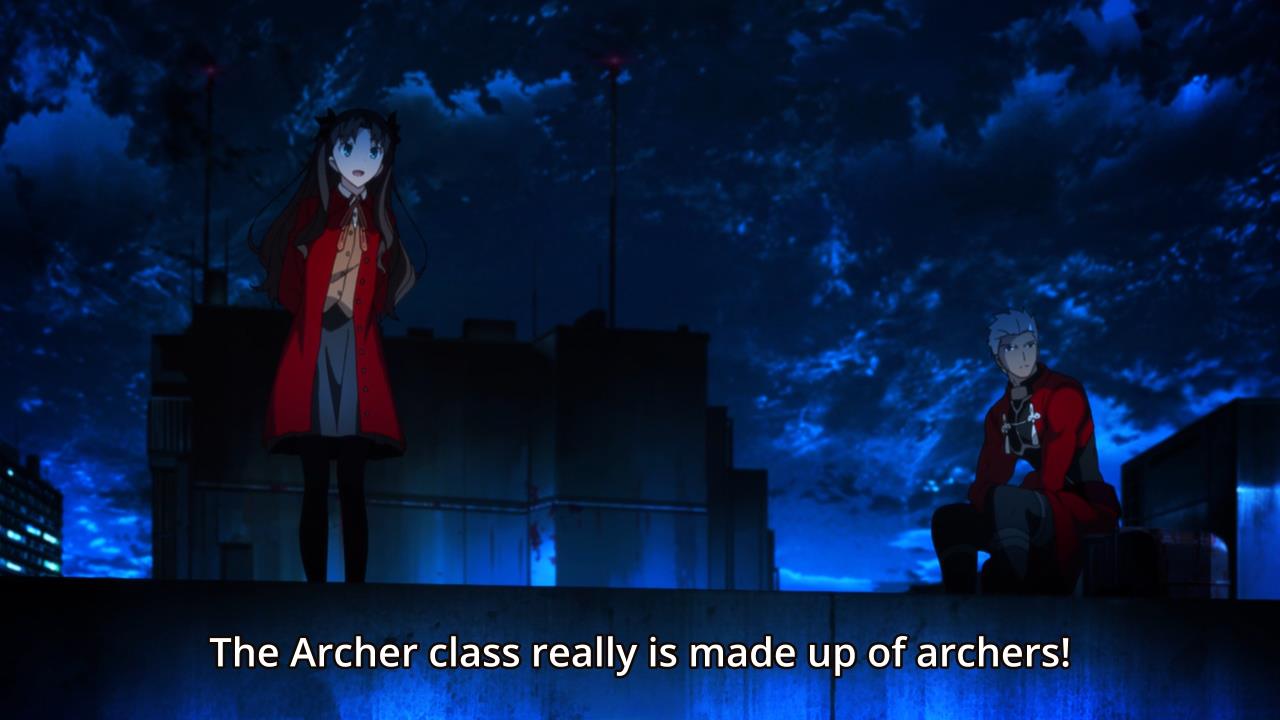
I am the remake of my franchise
Notes is my body, and ufotable is my blood
I have created over one thousand waifus
Unknown to Lerche, nor known to Silver Link.
Have withstood DEEN to create many viewers;
but those fans will never hold anything.
So, as it plays:
UNLIMITED BLADE WORKS
Fate/Zero was a marvel of an anime. It had gorgeous animation, detailed and likeable characters with flaws and imperfections, a gripping and well-written storyline with good music and voice acting to boot. The 2006 Fate/stay night TV show and the 2010 Fate/stay night: Unlimited Blade Works film by Studio DEEN, on the other hand, weren’t as great and going from Fate/Zero to the original Fate/stay night was jarring, disturbing and full of distraught. Luckily, Fate/Zero‘s production company, ufotable – who also produced another Type-Moon product, Kara no Kyoukai: the Garden of sinners, renowned for its quality and faithfulness to the original source material – came along once again to rectify that little mistake DEEN had made. The end result is Fate/stay night: Unlimited Blade Works, an anime which was blessed with an opening episode so mesmerizing and well-produced, it blew almost everything from this year out of the water in 47 minutes. And oh, how those minutes felt like seconds.
Comparatively, 2014’s Unlimited Blade Works covers the entire prologue from Rin Tohsaka’s perspective in 47 brief minutes to DEEN’s two episode mess that felt like two hours had been wasted, and the Unlimited Blade Works film that hazes over the entire catalyst of the plot in four minutes. Not only did this episode cover aspects not included in the previous two adaptations in that running time, it covered everything else they included too in spectacular style. These newly included scenes allow us to build a positive view of our heroine, Rin Tohsaka, a Magus of the Tohsaka bloodline competing in the 5th Fuyuki City Holy Grail War, and her relationship with Archer, the servant she summoned to fight for her during these battles. The dynamic between these two is electric and appealing from the very second the two engage in conversation together, a dynamic missing from the previous two adaptations. A key aspect of this adaptation is that it also improves the source material it adapts, along with the DEEN versions – Rin is presented as unlikeable and quite boring in the original visual novel, while here, ufotable has made Rin adorable and lovable.
Directed by Takahiro Miura, director of Kara no Kyoukai: the Garden of sinners – Oblivion Recording, Unlimited Blade Works has a boon in the form of ufotable’s always astounding and breathtaking animation. Every single frame is detailed with colour, and the characters match the original character design by Takeshi Takeuchi more than ever. The battle sequence between Archer and Rider is genuinely a sight to behold, and the summoning sequence of Archer shows off how far ufotable has improved in CG work since the conclusion of Fate/Zero‘s 2nd season only two years ago. On occasion, the CG cars are subpar, but they pass by so quickly you can’t notice them unless you pause it.
It is hard to find a single bad thing to say about this episode; I wish I could to prevent myself as coming off as a fangirl, but the episode is just so well-crafted it is incredibly difficult to not like it. It is filled with little nods to fans of the visual novel – it is obvious ufotable cares about the fans and the product it is making. It is very hard to come across a show so filled with allure and love, and I can do nothing but appreciate it. All the problems from the visual novel and DEEN show have vanished for this single episode – no terrible exposition, no unhilarious comedy, and the show is all the better for it. The episode is also much easier for newcomers than the opening episode to Fate/Zero was – and even though that episode too was interesting, it was a 50 minute long exposition dump.
The OP, Ideal White by Ayano Mashiro, is on the boring side, although we cannot blame ufotable for this feat – it is thanks to Aniplex that we have this self-insert for their music artists. We also have Aniplex to thank for the inclusion of a Kalafina song named Believe, which has yet to premiere. Kalafina’s Fate/Zero song, to the beginning, was the best piece of non-soundtrack music to emerge from Fate/Zero, thanks to being composed by the show’s composer, Yuki Kaijura, who will also compose Believe. On that note, the music, composed by Mahoutsukai no Yoru: Witch on the Holy Night‘s Hideyuki Fukasawa, fits the show to a T, although more exposure to his work on Unlimited Blade Works will allow this opinion to either grow or degenerate. Honestly, this episode was an experience.
As I pray; unlimited ufotable works. — Mahou Magusa
Second Opinion!
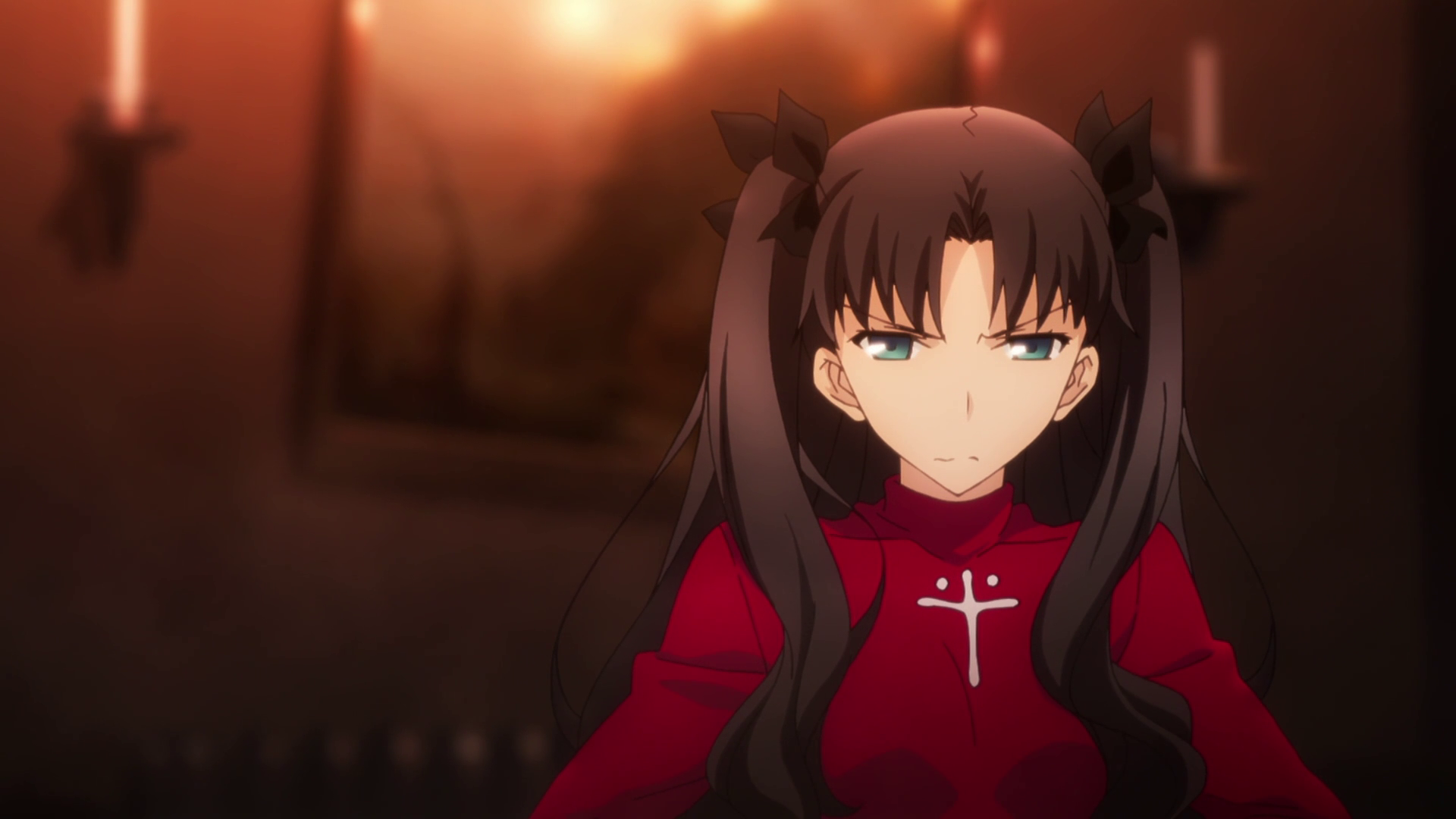
I’ll be honest, I know next to nothing about this Fate Universe that Type Moon has created. I haven’t read any of the visual novels, only ever watched a few episodes of the first anime, and other than that, have only been exposed to Fate/Zero in full. Having said that, I quite enjoyed that prequel. It took a while to get into, and I’m quite certain that I forgot most characters names by now, but as it stands, it was an entertaining series with a clearly rich mythos that could possibly even rival the works of George R. R. Martin for all I know (or in this case, all that I don’t know, which is a lot).
Having said that, I’m coming into this series without any clear expectations. I don’t know which “route” of the VN series that this is supposed to be covering, and I haven’t seen enough of the first anime to make an accurate comparison to it. What I can say is that, unlike the first anime, and even Zero, in this case, I found the hour-long prologue of this series to be very engaging thanks to good pacing and choosing to focus on the perspective of a single master, Rin Tohsaka, and her Archer-class servant, who has thus not been named in the show. Whereas the bloated hour-long entry point of Zero served to cram in a lot of essential backstory in heavy-handed exposition, it would seem that the writers learned how much of a turn off that could be for newcomers to want to get into the series, so they decided to let this prologue have its breathing room, which was a wise decision, from my perspective.
The episode takes things from Rin’s point of view, and one thing it really does well is to establish her as a (mostly) level-headed character (albeit short-tempered in regular conversations), and gives us some cause to sympathize with her. In the first few episodes of the first anime, she just came off as annoying and complained a whole lot. Over here viewers can now identify with her somewhat, so she comes off as genuinely likable, and this will most likely make her a much more bearable character for the rest of the series. As for Emiya Shirou, who I believe is supposed to be the main character of this series, it would seem that he has cleverly been kept to the background of this episode, making brief appearances and never having his face shown, most likely to keep this premiere focused on Rin, as a character.
From a production standpoint, this is what you’d expect from a Type Moon product adaptation. The animation is high quality, the soundtrack is great (although it largely seems to be ripped straight out of Zero, at least so far), and the voice acting is top notch. The action scenes in particular are outstanding. In short, it’s everything that Toei Animation is not. There isn’t much else to say other than this is clearly one of the better premieres of this season. Granted that, I know it’s not for everyone, so if you’ve seen a few episodes of Zero and didn’t care for it, I doubt that this will change your mind. If it did perk your amusement, however, then this series will most likely be a must watch. — Dr. Ensatsu-ken
Third Opinion!
I’ve always loved Fate/Stay Night, but I’ve always hated reading it. This is not due to my attention span being too short to digest strings of words and sufficiently create mental imagery (I love reading, and writing, books… honest!); rather, it’s because I simply cannot stand the original visual novel’s prose. I touched on this a few years back with my opinion piece about F/SN, but I found the writing to be overwrought – filled with needless and occasionally repeated exposition. The dialogue was largely stiff, the comedy often grating, and the characters interesting but rarely likable. Of course, this is all just my opinion, as I know plenty of people who would disagree, and I’m not about to tell them they’re wrong. The truth of the matter is that Nasu’s writing style simply isn’t for me, though I must admit that he has great ideas and writes some damn good fight scenes.
This new Unlimited Blade Works anime improves exponentially upon the original work in my eyes. It successfully manages to cram nearly 3 hours worth of reading into 48 minutes of animation, and it does so without losing anything in the process. In fact, the brevity of this prologue episode is UBW’s greatest strength; entire pages worth of unnecessary text have been shortened to single lines of dialogue without damaging the intent of Type-Moon’s famous story. The audience learns everything they need to know without tens of paragraphs detailing minutiae, and the pacing flows right along because of it. The character interactions are also a lot more interesting than they’ve ever been – for once, the dialogue actually feels fun and natural rather than wooden and forced. Rin Tohsaka, who I hated in the VN, comes across as genuinely likeable and even downright cute in this installment, while Archer’s dry snark is more enjoyable than ever. And the humor is surprisingly on point throughout, partially because the silliness simply works better in motion, but also because the well-written script has made numerous improvements to the comedic timing.
Speaking of motion, ufotable does Nasu’s excellent action writing justice with the Archer vs. Lancer fight in this episode. It’s fluid as hell, and all around exhilarating to watch. Lemme’ tell ya, I could get used to this trend of each anime season having at least one show with well-animated over the top battle scenes. Everything else also moves with an almost movie-like quality that you rarely see in television animation, though the corner-cutting present with some CG cars in one scene is embarrassing to witness. But it all looks so crisp that it hardly matters; the character designs capture the iconic art style of F/SN perfectly, and the backgrounds serve as both eye candy for newcomers to the franchise and fanservice for those who’ve read the original work. My favorite thing about the presentation of this anime is that many scenes have these cool filters placed over them which give the lighting a very pleasant “real” quality. The outside scenes in particular are gorgeous – you can practically feel the chill of the night air in certain shots. You might even want to watch UBW in 1080p to screencap some new desktop wallpapers for yourself!
I’m beyond pleased with the first episode of Unlimited Blade Works. While I loved ufotable’s adaptation of Fate/Zero, I was worried that they wouldn’t be able to turn the writing of Fate/Stay Night into something more palatable for television audiences; God knows Deen failed, twice. Despite being almost completely without hype, this episode delivered everything I could have ever wanted from an adaptation of F/SN’s prologue chapter. Now let’s just hope that the rest of the series also turns out so well. — Foggle
Garo The Animation

So here we have the anime adaptation of Garo, Kamen Rider for edgy people. And boy howdy, does that show want to live up to that description. Studio MAPPA litters this episode with impalements, sex, and people giving birth while being burned alive, becoming reminiscent of skimming through a random volume of Berserk. Every second feels like the writer screaming that she doesn’t just make children’s shows, though I can’t tell if it’s as shameless about it as Akame ga Kill is. Unlike that show, it at least keeps a consistent tone throughout an episode. It knows what it is, and doesn’t try to hide it through jokes and other bits of shonen comedy.
I like the style of the show, and how it resembles watercolor at times. Compared to recent attempts to stray from the norm like Ping Pong, this improves where Yuasa didn’t by having animation that actually flowed. God knows how much better his work would be if he actually put in more frames per episode. But back to Garo, I could see this show pulling off some interesting ideas through its art. Sure, it overuses CG in places, but that doesn’t clash anywhere near as much as it does in other shows thanks to the aesthetic. Plus, the plot looks like it could be fun. Though given the writer’s pedigree, I’m also expecting something stupid to occur in the future. — Bloody Marquis
Gugure! Kokkuri-san
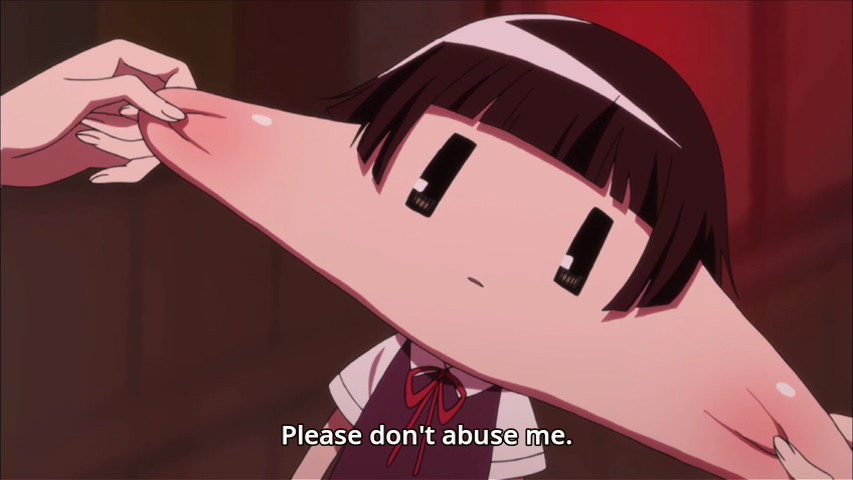
A young girl attempts to summon a spirit, and gets a white-haired fox bishonen instead. She asks this “Kokkuri-san” to leave, but he decides to haunt the lonely girl (who insists she’s actually a robotic doll) anyway. This basically just amounts to making sure she doesn’t only eat noodle cups all day.
So…yeah. Like most adaptions of 4-koma series, there isn’t a whole lot to be said. You’ve got your usual segments of offbeat characters doing offbeat things in an offbeat way. The main girl’s a kind of anti-Yotsuba: her monotone voice and introversive attitude make for most of the best jokes in the show. The dynamic between her and Kokkuri is actually quite a bit of fun, and I had few good chuckles watching it. There appears to be more characters to come, but for now these two are perfectly amusing on their own. Nothing special, but I enjoyed it. Worth a look if you want something fun to wind down to. — Shadow Gentleman
Gundam: Reconguista in G

STAND AHP TO DA.... Recon-G?
(AUTHOR’S NOTE: I am well aware that episode 2 has also aired, I do not have a copy of it at the present time and as such have not yet viewed it.)
Yoshiyuki Tomino is without a doubt arguably the most important figure in all of mecha anime. The creator of such classic works as Zambot 3, Xabungle, and Ideon, he is of course best known for his magnum opus, Mobile Suit Gundam which is considered the original “real robot” show and has provided decades worth of series and mechanical designs for otaku to make model kits out of. Not bad for a show that famously got cancelled 10 episodes early and only made a profit when it was turned into a series of compilation movies.
…That said, he’s also arguably one of the most overrated hacks of all-time. Using his somewhat well earned reputation to churn out crap like Brain Powerd, Wings of Rean, Gundam F91, and, of course, the infamous Garzey’s Wing. Titles certain snooty animation critics glaze over in favor of mostly unreleased works like Ideon Be Invoked (I’ll give em that, the Ideon movie is fricken amazing).
It’s with that sense of unease that I approach G-Reco with a bit of trepidation. Its been 15 years since Tomino made his last Gundam show (Turn A, the only tv series produced during Gundam’s ill-fated Fuji Television period) and OVER TWO DECADES since he did anything with the series’ original continuity. Yes folks, after 22 years we finally have a series set after Victory Gundam, a millenia actually. And for a first episode its actually not too bad if incredibly uneventful.
So 1000 years after Amuro and Char burnt up in the atmosphere because Tomino got tired of them, humanity has finally moved on from endless space wars by telling the Sides to get lost and built a series of giant space elevators. The problem is apparently the Crossbone Vanguard (or some version of it) is still around and using mobile suits called G-Selfs, which look like what you get if somebody stuck an RX-01 Gunpla in an oven and then tried remold it using their bare fingertips, to attack said space elevators for reasons unkown. With the Federation long gone, we have the Colonial Guard and their new trainee Bellri. He ends up in a fight with a G-Self piloted by Ple lookalike Aida Surugan that’s rather one sided. Aida claims her G-Self can only be activated by her and her alone but then Bellri walks right in because… Gundam protagonist.
Now surprisingly the first episode of G-Reco, despite very little actually happening this week, feels rather rushed. I could blame this on the fact that this is the first Gundam tv series to run less than three cours (Build Fighters doesn’t count) and Tomino just doesn’t know how to adjust his usual drag ’em out space opera pacing but that probably wouldn’t be accurate. Its not unusual to have a have a rather rushed and awkward first episode in this franchise (see Victory Gundam) but its still annoying. As it stands though, the first episode is pretty fun to watch and long time fans nostalgic for Tomino’s style will feel right at home. For better or worse, it actually feels like a show made in 1994, with occasionally iffy animation and a really bad sound design which dumps stereo for good ol fashioned mono! (or at least my copy of episode 1 does). Things clearly need to be ironed out as this first episode feels a bit uneven. That doesn’t mean I won’t came back to see where Tomino takes his lumbering giant of a franchise next time though. — Lord Dalek
Addendum!
About an hour after I typed this, Episode 2 was released (both aired back to back on Animeism last night) and aside from some bug fixes (bye bye mono, hello stereo!) not much improved. In fact you could say this show has regressed somewhat due to its stock cliche characters (boring male lead, tsundere bitch, Lalah clone who only speaks in broken sentences) and surprisingly inane plot (attack space elevators so that mankind can invest in solar energy?!? Well I guess if everybody is a NewType now there’s no point trying to freeze the Earth….). On the plus side Tomino throws in some nice fanservice by giving us a statue of a Gouf to look at! THE RECKLESSNESS OF THEIR YOUTH!!!!!!!!!
Second Opinion!
Let it be said that an anime directed by Yoshiyuki Tomino can be easily identified through his menagerie of recycled techniques, be they the tirades about women being mothers or adults and their lies. He’s a man with much whimsy, even if that childlike wonder takes away room usually meant for plot coherence. Tomino always is an odd director, and how exactly he started a franchise that lasts to this day will bewilder the mind that knows of his other work. One wonders if Gundam was a lucky strike in his field of work. And if so, may God have mercy on the universe where Garzey’s Wing or Brain Powerd started a cash cow dynasty.
One can see his eccentricities in the fight scene where a Gundam with giant soldiers fights Lord Canti from FLCL, where “The world is not square!” is shouted without any particular explanation. These are characters that paradoxically act too human and inhuman all in the same scene. I have legitimate concerns over the brave person who does a psychological reading of this and other Tomino shows, because I feel ensured to say that every episode will have a moment that will stump the audience at least once. Some moments feel like a veteran has crafted them, while others feel like the scrawling of a manchild in severe distress. I stare at Raraiya Monday’s reaction to the Gundam, and wonder how much of that reflect Tomino’s outlook on life.
Tomino proudly stated that this would not be a show for the usual Gundam fans and will instead be one for younger audiences. Frankly, he achieves this job in a sense. It caters to school-aged children the same way the Teletubbies catered to babies, through dancing and smiles curled together with violence and war. Watching this show made me feel like my parents when they watched Pokemon, where delirium reigns and a mental wall can be felt by those outside the demographic. Perhaps in years past, people will look at this show and see a masterpiece wrongly shamed by critics. Or, they could see this as the weird Gundam that proved Sunrise’s encroaching senility. Only time can tell. — Bloody Marquis
Third Opinion!
Bellri Zenam is a quirky, good-natured, ne’er do well; yet not only is he a son of a major figure, he is part of the Capital Guard, protectors of what is known as the Capital Tower (aka Space Elevator). During a daring attack by Space Pirates, a chance encounter with an iconic-looking mobile suit and its pilot Aida Rayhunton, looks to lead Bellri on what may be a rather interesting quest. Unfortunately said quest may involve war, death, hidden revelations, masked men, emotional maladjustment, and garish aesthetically-pleasing marketable robots.
It has been a while since we had a Gundam series in the classical style, directed by the original creator Yoshiyuki Tomino no less. Thankfully all seems to be in order for a potentially good show. The setting and design of the show (despite a heavy harkening to Tomino’s previous work, Overman King Gainer), is surreal and interesting; the action and animation is tight and well-choreographed; and the music by Yugo Kanno is nothing short of epic. The story, while starting in media res and having not much established to it, is enacted well enough to raise mystery and pique my curiosity. The world is so surreal and so unknown, with all its religious and militaristic trappings, space pirates, and what have you, that I’m truly left wondering how it all comes together. Tomino really hit it out of the park with the way he got the ball rolling with these first two episodes.
However, all is not well in certain aspects. Tomino while incredibly competent is still incredibly weird. It is not just the way he crafts dialogue (hard to follow, peculiar flow, too much talking), but the little bits of the world he has created. It is a world of cheerleaders appearing everywhere, bottom nuts, waifish girls, and a rather whimsical tone that, when paired with the dialogue, sometimes leaves me scratching my head. Sometimes I was, “Do we really need all this crazy nonsense?” and then have to restrain myself because it is Tomino and it is only the first two episodes. We do not get much out of the characters either except that Bellri is brave if dumb, Aida is overly idealistic (and *shudder* a potential environmentalist), and everybody else just seems to roll with it as much as they can, but again… ‘Tis only the first two episodes, maybe something will buff out. Thankfully they are not TOO annoying, except for the waifish girl who is relegated to mostly single syllable lines. They gotta fix that.
They also gotta fix the opening and ending. Both are incredibly mismatched as the ending should be the opening and vice versa.
Still. It was weird, it was wacky, it was well-made, and it was worth watching. Don’t mess this up Tomino, I am looking forward to seeing where this crazy little number takes us. — The Juude
In Search of Lost Future AKA Searching for the Lost Future AKA Clannad
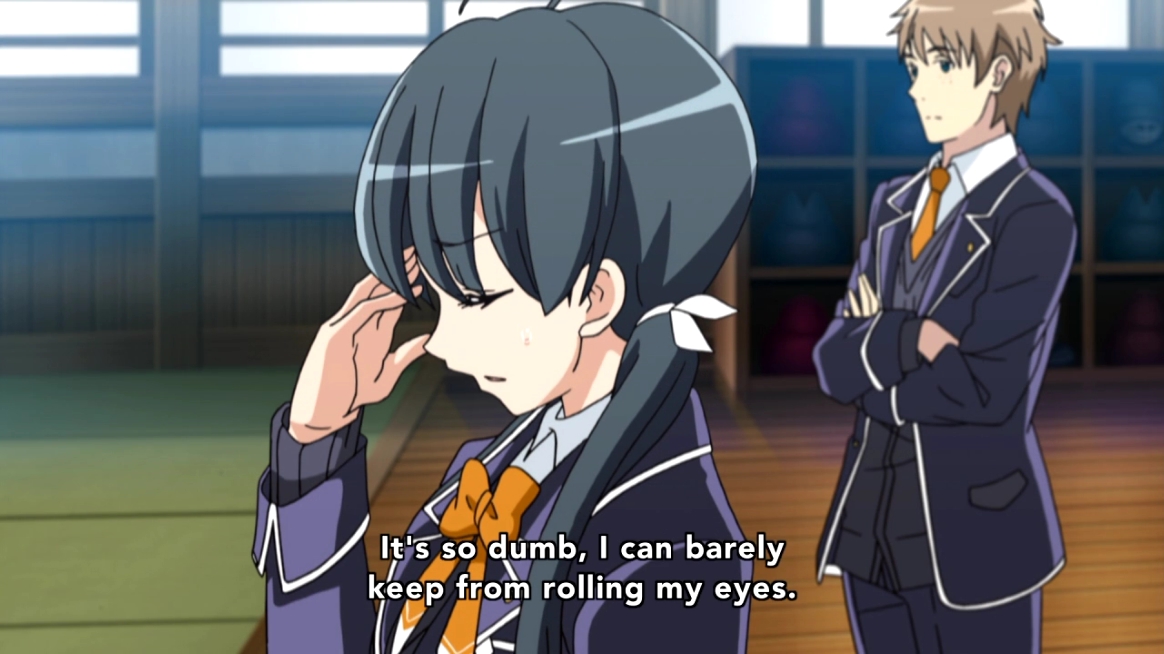
In 2004, Jun Maeda created a little visual novel named Clannad. In 2007, Kyoto Animation adapted this visual novel into an anime. In 2014, we have gone full circle: In Search of Lost Future, a feel. anime based off the 2010 visual novel of the same name, truly is the greatest Jun Maeda fanfiction of all time. Move aside, Myself ; Yourself! Goodbye, Tomoyo After: It’s A Wonderful Life! Hush hush, H2O: Footprints in the Sand! In Search of Lost Future is here to claim your inglorious, abhorrent throne.
Some high school students run an astronomy club and the student council wants them to clear up some uneasiness within the school. During a confrontation with another group, a girl named Kaori injures her ankle. Later, her friend, Sou, confesses to Kaori after school ends. Kaori walks home with her injured ankle, trips over and gets run over in “dramatical” style. And with that, the plot to In Search of Lost Future begins. The show gives us a taste of its time-travel “twist” at the beginning and end of the installment, and while the ending taster could give us incentive enough to watch it, the rest of the episode doesn’t if you’re watching it purely out of curiosity and not for ironic purposes. The episode doesn’t build up any emotion, surprise surprise.
The episode honestly feels like a low-rent Clannad episode. The entire premise of the show feels like a low-rent Clannad, to be honest. The characters are cardboard cut-outs, who do not leave much of an impression on the viewer – impressions are meant to be left on the viewer, but In Search of Lost Future seems to forget about that key fact. The episode merely hints at what lies beneath its typical surface, and if those hints were handled well, it could lead the viewer into watching the next episode. It isn’t handled well. The only thing that can captivate the viewer is the unintentional hilarity this episode produces. Stiff, terrible-CG looking, uncanny valley-level animation? Check. Ridiculous dialogue, so poorly written it stuns you? Check. An attempt at drama so awfully handled it leaves you in stitches? Check. Also, to mention, the title of the show – In Search of Lost Future – is a direct reference to In Search of Lost Time, the Marcel Proust novel. Considering the official subtitle for Lost Future is À la recherche du futur perdu, we couldn’t get more pretentious if we even tried.
In Search of Lost Future reeks of rip-off, in the kindest way I can put it. Its visual novel artwork had somewhat unique and bright colouring which was pleasant to the eyes, but the transition was not directed well by Studio feel., the beautiful company that brought us modern-day masterpieces such as Yosuga no Sora and last season’s Jinsei. The result of this poor direction is terrible character design, creepy animation that hints at dreadful CG usage, disturbing character expressions and stiff walking animations. feel. has honestly not sunken so low in their previous productions, as their animation was always the bright spot within the otherwise monotonous or painful darkness. If feel. was trying something new out with their animation techniques, feel. honestly did not do a splendid job, as it is astounding to think people spent time and money producing this mess. The quality of the picture sometimes looks like a slab of the greasiest Vaseline was smothered all over it, and that is putting it both lightly and elegantly.
The voice acting is nothing special, and the music is non-existent to say the least. During my viewing, I heard little to no music, and if I did, it was the nauseating, typical J-pop credits song at the end of my sadistic torture session. “Typical” is a word that epitomizes and becomes synonymous with In Search of Lost Future: a bottom of the barrel, lazily and hastily made anime that puts others similar to it to shame. When I consider a Clannad rip-off to be more fanfiction-like than a product made by the creator himself – see Tomoyo After: It’s A Wonderful Life, which reeks atrocious levels of fanficton-like writing – then we really have sunk so low that there is no redemption for the visual novel-to-anime adaptation.
As I pray; Unlimited Proust Works. — Mahoust
Second Opinion!
Guys, I think there are cracks in time, because most of the anime this season are just from different years. G-Reco’s from the 80s. Cross Ange is from ten years ago. And this show represents a lost era, where we could have tsunderes kicking entire crowds of thirty-year-old students in the class without the slightest twinge of irony. I’m seriously feeling like Billy Pilgrim, because this show is unstuck in time, with clichés that even the most shallow of recent anime have subverted. Not even a man like Seiji Kishi could direct something so blind to the times. Like other attempts to create a work of fiction, as it would be from decades past, this genuinely has all of the colors of a recently unearthed 2007 anime.
Specifically, it looks like a work from the Jun Maeda era. I thought these were a near-extinct species. You couldn’t get a visual novel adaptation this exact to the time period last season, let alone last year. It’s amazing how fresh it looks after all these eons of being buried by the hostile lands of Japan. Sure, the detail is a bit greasy, like it’s from a Nigerian tape or something, but it truly brings back the retro 2007 experience. I think the British Film Institute could make lots of money from findings such as these. I have few other words that can mask my flabbergasted reaction toward this series out of time.
They even have the contrived angst where the main love interest gets hit by a truck. This is truly something that could stand alongside classics like Shuffle and Toradora. I know series like Golden Time tried to replicate this vintage period of anime, but they could never get it right. This one, however, feels too true to be from this year. This, the first find of a treasure trove of lost anime, could be the key to making the archives complete. If we can find this and a lost Gundam series, then we could possibly find other lost treasures like Abunai Sisters and that one episode of Tokyo Pig. This could be the greatest find since Al Capone’s vault, I tell you! — Bloody Marquis
Karen Senki

Somewhere... Ticket is crying.
Oh god… I just had this horrible dream. I thought I was watching this 10 minute anime written by the Sakura Wars/Far East of Eden guy but it was all cgi done by the Apple Daily News guys. But something that bad couldn’t exist right?….it does?…and its called Karen Senki?
OH NOOOOOOOOOOOOOOOOOOOOOOOOOOOOOOOOOOOOOOOOOOOO!
So yeah Karen Senki is a show where a blond Chinese girl is constantly chased by killer robots for 1o minutes. Honestly I have no other clue as to what its about. Also Travis Touchdown tries to get it on with Wagon from ToQger. BEST ANIMU OF THE SEAZON. — Lord Dalek
Laughing Under the Clouds
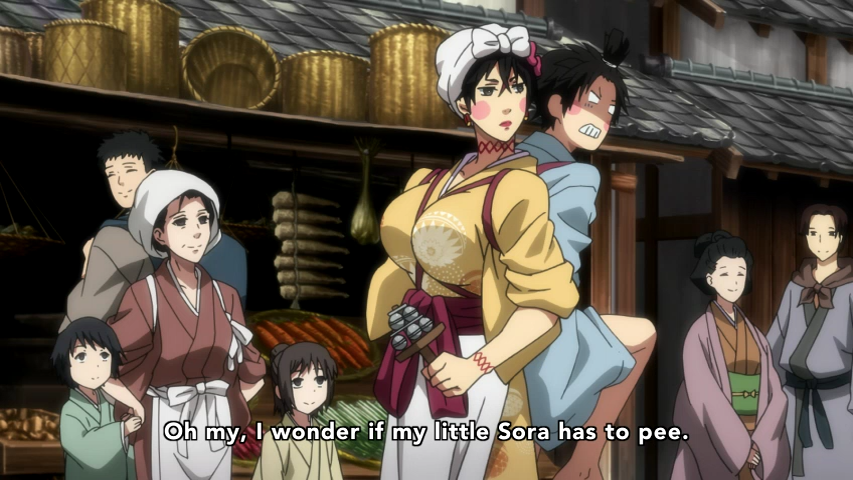
Kingdom Hearts fanfiction.
In the Meiji era of Japan, there lives three brothers: one with stupid hair, one with a stupid hat, and one who…um…wants to get stronger or something. They spend their time doing the polices job for them, and ferrying criminals to a gigantic prison in the middle of a lake. At one point the oldest brother dresses in drag Joseph Joestar style and carries the middle brother around like a baby. And their parents are dead, naturally.
While the brothers themselves are okay, nothing else about this show really seems to stand out or grab my attention. Sure, the setting of rapidly westernizing Japan (think Rurouni Kenshin) promises some interest, as does the concept of the prison, but the overall package really doesn’t offer much to merit tuning in a second time. It feels very average in many respects, and although I suppose there is room to develop an intriguing plot, as it stands I can’t really recommended it. — Shadow Gentleman
Le Fruit de la Grisaia

These images should tell you everything you need to know about the majority of this episode.
The series premiere of Grisaia has me feeling conflicted. On one hand, the comedy is generally awful, and even painfully unfunny at times; on the other, some of the lines near the end of episode are actually pretty humorous. On one hand, the protagonist, Yuuji Kazami, comes across as bland and a bit of an asshole; on the other, the show occasionally drops hints implying an interesting backstory, and his snarky realism is refreshing as far as harem protagonists go. On one hand, the female characters are all obnoxious and probably insane; on the other, the final scene reveals that this is intentional. On one hand, the majority of this installment is downright painful to watch, and I honestly felt like dropping it multiple times by the halfway point; on the other, the post-credits scene is intriguing and actually made me eager to see more. That’s a lot of a hands.
This is a tale of two shows, basically: the one that dominates the first 20 minutes, and the one that presents itself after the credits roll. I was ready to write this one off six minutes in, and between the cookie-cutter “deep” prologue text, cringe-worthy attempts at comedy, and pointless cinematic widescreen presentation, I don’t think you can blame me. But as soon as the episode finished playing, I was scrambling to Google to find out just what the hell was going on there at the end. After reading some cryptic posts from various message boards, I’m thinking this could turn into a Higurashi or Madoka kind of deal where the first episode is intentionally misleading but drops hints that some weird stuff is yet to come. Or maybe this will just end up being an edgier, shittier Clannad. It’s hard to say, really.
So, is this episode worth your time? Not yet. Regardless of the promise it shows – which its fans have reassured me of (this is based on a visual novel, after all) – Grisaia‘s first installment is still mostly terrible. The artwork is frequently awful, with characters who look almost exactly like uglier versions of the Monogatari cast. There’s an inexplicable and annoying fascination with panty shots from beginning to end. The principal looks younger than any of the students, and pisses herself during one of the first scenes. The fact that the school Yuuji attends is populated by only six students total invites further Monogatari comparisons and requires a suspension of disbelief I was not willing to grant. Oh yeah, and let’s not forget how Yuuji’s family is dead, or that he gets the window seat in class.
To clear things up: I want this show to be good. I think this show will be good. But it really isn’t good. Yet. — Foggle
Log Horizon, Season 2
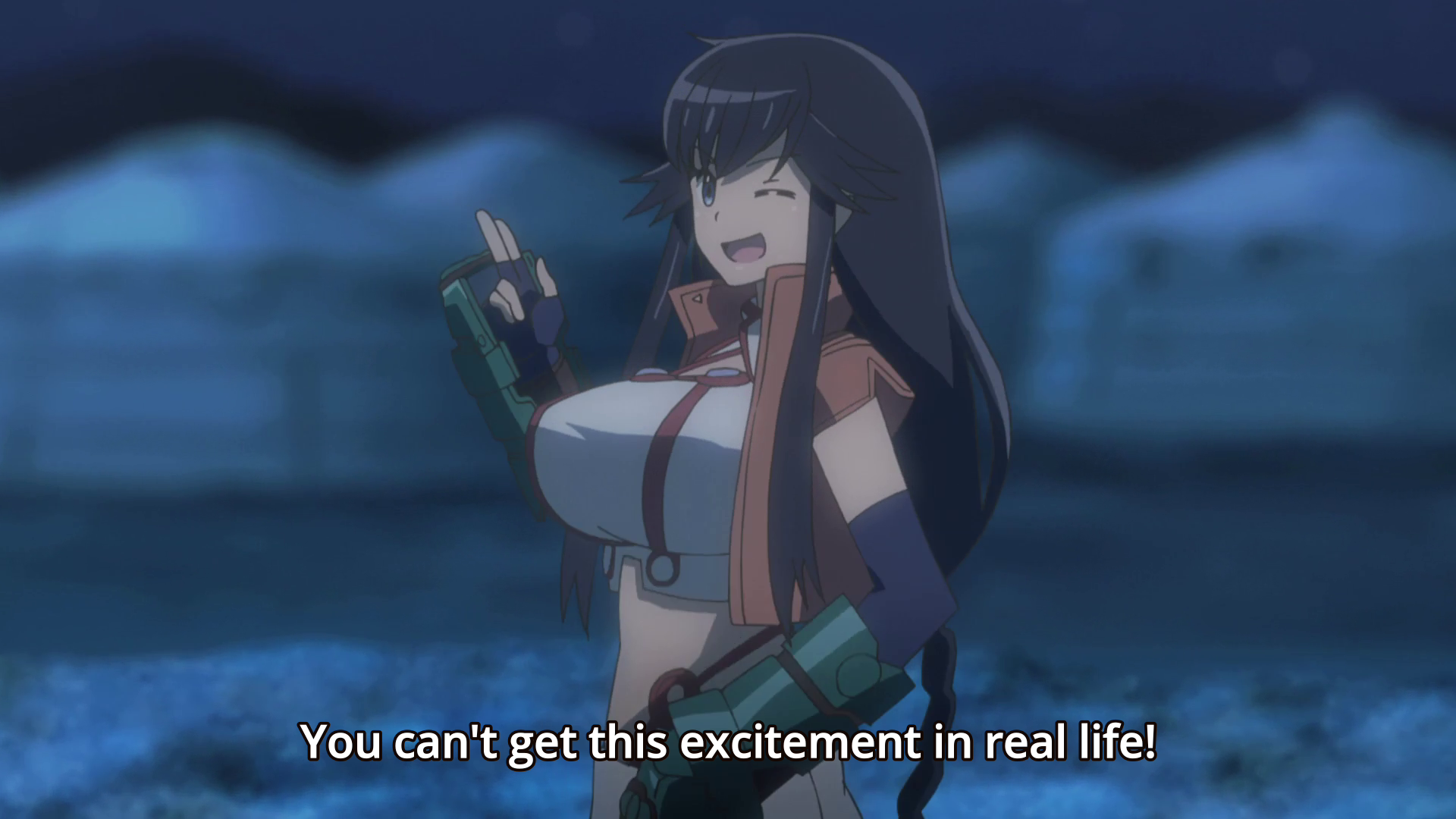
I paused it for ya so you can read the subs.
It’s been one year since The Apocalypse and the players of Elder Tale still can’t figure out how the hell they got stuck in their MMO. The kooky guild of outcasts and misfits that is Log Horizon is trying to do something about it however, even it means failing at athletic festivals repeatedly. But that’s not good enough for Shiroe who leaves with Naotsugu to investigate ways of making a quick buck very quickly. You see the cost of running the Akihabara Server (even though there are technically no longer servers) has become so astronomical that guilds from Osaka are already planning on making a move. How do you get gold? Simple. Go get some. All the gold in the world is generated by a magic river (hahaha Wagner references!) but its guarded by a ton of monsters. To get the gold, Log Horizon will have to kill the monsters, and if the episode’s tag is anything to go on, that’s not going to end well.
The initial series of Log Horizon was initially dismissed (at least by me) as a cheap SAO knock-off, and in some ways it was. The animation was crap, the music was crap (except for the OP), and the voice cast mostly d-listers. The major difference being that Log Horizon is surprisingly incredibly deep and well written (as long as you excuse its occasional tendency to get way too technical) where as a four year old could easily write a better Sword Art Online than what Kawahara has given us. Surprisingly the show has received a second season despite there only being two published LNs released since the conclusion of Season 1, which is kinda ominous when you consider that season 1 was a two-cour show. We’ll see how they stretch it, if any stretching occurs.
Production wise, some major changes have occurred. Out is Satelite, which decided to make Vanadis this season instead. In is… oh god… Deen, who couldn’t animate a sock even if it just meant taking a bunch of still photographs of said sock and making a Muybridge film out it. On the other hand, NHK, which owns and produces Log Horizon, gave Satelite a budget of two walnuts and a nickle last year and it really showed with its stiff wooden quality. Season 2, by comparison, looks like a Deen show. Not an improvement, but not much worse.
So anyway Log Horizon the Second looks to be about as much fun as the first season if you enjoy a somewhat sarcastic commentary about standard RPG mechanics (I did, but I also kinda skipped around with season 1). You could do far worse by watching whats on Tokyo MX five hours later. — Lord Dalek
P.S. – NHK was too cheap to afford a new theme song so DATABASE DATABASE WHOAHOHO.
Lord Marksman and Vanadis
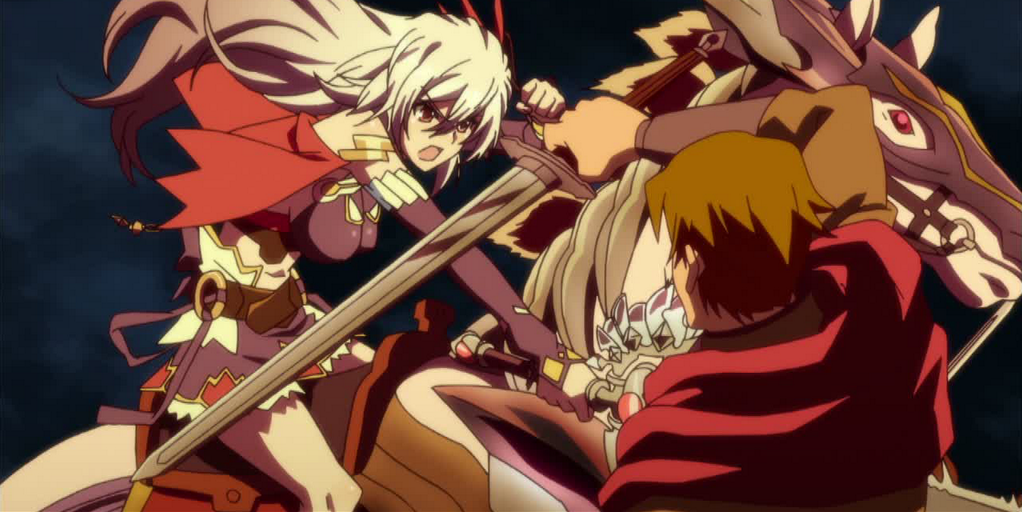
So, of course it’s only natural to get our seasonal offerings of medieval-esque fantasy anime, and this is one of those anime. Based on a light novel series, Lord Marksman and Vanadis tells us the story of a marksman being taken prisoner by a warrior maiden from an opposing army, and presumably proceeds to expand upon some obvious romantic relationship that will grow between the two of them. Now, normally I would go onto a Wikipedia page for a show like this after watching the premiere episode just to refresh myself on the characters and location names, and give you a better idea of the plot since I’m so used to premiere episodes failing to really teach me that much about the characters of the series or the world that they inhabit, but quite frankly I’m sick of that. I thus came up with a new personal rule for myself, refraining from looking up any detailed background information on any series beforehand, and just presenting to you what I learned or even remember from the episode itself.
Now, to this show’s credit, I do believe that it touched upon most of the basic information necessary to set up its world and characters. That said, to its detriment, it failed to present it in a way that made me care enough to find any of that information important enough to remember. Thus, I can still only refer to our main leads as marksman guy and warrior maiden lady with the white hair. Likewise, trying to describe their characters without touching upon details like what they are wearing or their role in the story, I’m left with very little to say. Marksman guy is stoic and honorable and….yeah, that’s about all I got for him. Warrior maiden lady with the white hair is energetic and optimistic and….well, I’m all out of things to say about her as well. And, mind you, these are our two main leads, so we learn even less about any of the supporting characters.
The show also pushes forth an expected level of fan-service for this kind of thing, with unrealistically proportioned breasts-a-plenty, “warrior” attire that doesn’t look the least bit practical for actual combat, and it comes complete with that cliche scene of the male lead walking in on the female lead while she’s bathing (cue obviously awkward dialogue exchange). Perhaps some of that fan-service time could have been better used to flesh out the characters and world, but perhaps I’m being too harsh on this show after just one half-hour segment. In truth, nothing about this premiere offended me in any way, and I can’t think of anything outright bad or terrible about it. Yet, on the flip side, it didn’t stand out to me either, with the exception of the soundtrack which I must admit was quite well-composed and made certain scenes feel far more engaging than they really were from a writing or action stand-point. The animation was also suitably above average, with pretty impressive production values, though that’s only to be expected for a premiere episode, and I doubt that this would hold the same level of quality for an entire series run.
Essentially, Lord Marksman and Vanadis is that predictable yet somehow strange sort of premiere where I honestly don’t feel anything toward it. The writing, characters, and setting are all just aspects which I feel largely indifferent toward. However, it also makes my recommendation all the more clear. It may not be bad, but by the same token, a Game of Thrones this is not. Perhaps the series will expand on its narrative and improve its writing in future episodes, but I can’t say that I’ll be sticking around to find out, so you may want to pass as well, unless this genre of anime is just something that’s really up your alley, in which case you may get more enjoyment from this product than I did. — Dr. Ensatsu-ken
Second Opinion!
In a fantasy world, where women’s armour and wardrobe are so scantily clad that it would probably make SJWs cry, the two kingdoms of Brune and Zchted are at war with one another. After a bloody battle, a Brunish count, Tigrevormund (Tigre) is captured by a Zchtedian War Maiden named Eleonora (Ellen). Admiring his skills with a bow (among other things), Ellen tries to draft Tigre into her forces. Poor Tigre is reluctant, but that will change given the circumstances of his homeland at the episode’s end.
I kinda liked this. Granted there is not much exceptional here in this first episode, but its overall execution is good. The world is standard fantasy, but the aesthetics are so appealing especially once it hits the midway mark that I didn’t even care. Characters are for the most part very solid, especially the two leads. Tigre is very taciturn but loyal, and does quite well for himself given his situation, and Ellen appears to be a rather strong foil to him. She is eager, confident, and overall good-natured enough to make her a likeable lead. I’m really curious to see how well these two hit it off as the series goes on. Everything is polished and bereft of anything that would annoy me heartily.
No I am not at all irritated yet by the fanservice. It seems to come with the territory and only if it devolves into something much worse (like say, your atypical harem show with the Seijun Otokos).
Anyhow, here is to hoping Vanadis continues to build from a solid first episode without devolving into boredom or worse. — The Juude
Magic Kaito 1412
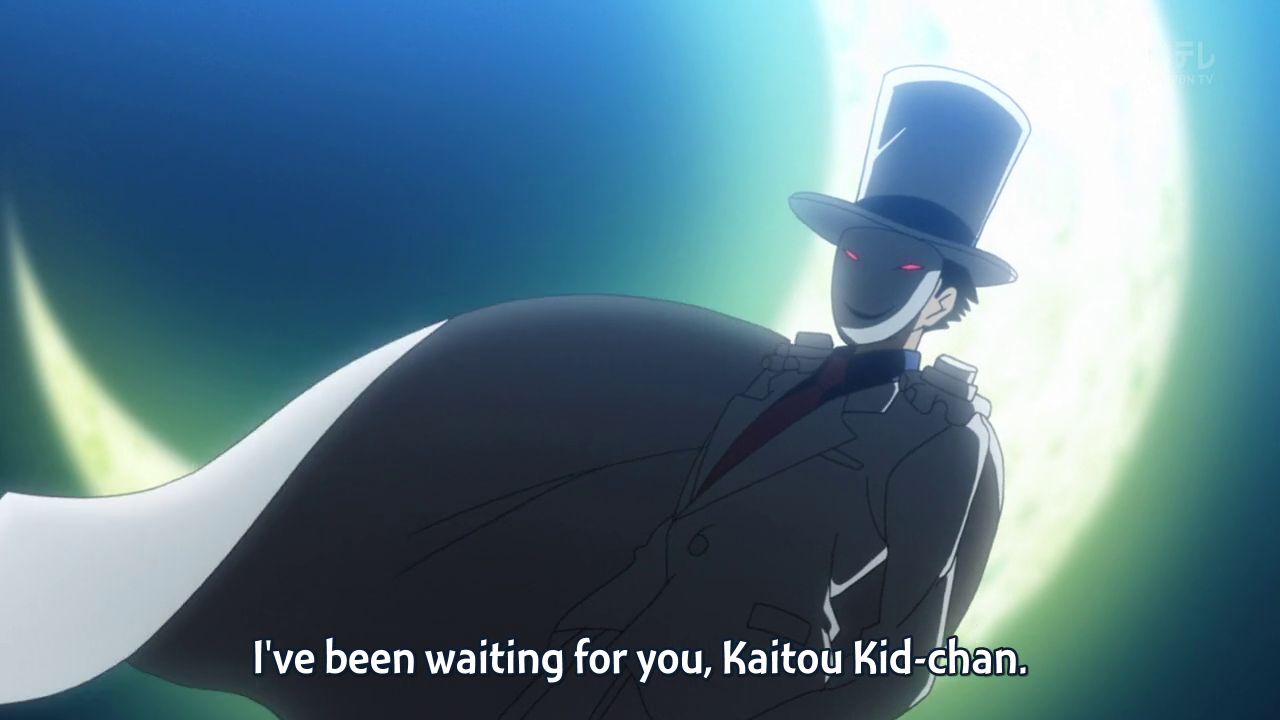
Even Kaito himself is excited that he has a new anime.
A while ago somebody I know made a very good point that stuck in my mind: Animation is an illusion that makes you forget what you’re seeing on-screen are a series of drawings, and instead see them as organic, lifelike characters in a believable, three-dimensional world. You can expand this idea to apply more generally to any medium of storytelling, where the best of the bunch cast a spell that makes you forget the events of what you’re reading, seeing, or hearing isn’t tangible or real. If the work engages it’s audience thoroughly enough, then even if there are some things that might not add up, the audience is likely not to notice or care, so entertained by the trick they can look past and ignore one or two visible wires. In animation in particular, there are all sorts of fantastical, improbable concepts and abstract worlds that don’t reflect reality as we know it, but at the same time, we’re willing to believe in them, and the people that live within them.
On these grounds, I’d say Magic Kaito 1412 is one darn good magic trick. When you stop and think about it’s story, there are a couple of holes and inconsistencies. But, like the magic show performed by Kaito’s father, chances are the audience is having too much fun believing in the illusion to care. The show does not lag or give you time to think about what may or may not make sense and does exactly what it needs to in order to entertain. It’s a fast paced effort that wastes no time in establishing the characters, the setting, and the story, and runs with them to good effect and with an understanding of what will make this series work, and does it all with a great sense of humor to boot. In basically one four-minute sequence we get to know pretty much everything we need to know about who Kaito and his best friend/love interest Aoko are and what makes them tick, and similarly the other major characters presented in this episode are quickly characterized to good effect as well. The plot of this episode moves so fast that by the end it almost feels like not a whole lot happened, but in a good way. When the opening theme showed up half-way into the show I was genuinely surprised because I didn’t think ten minutes had flown by so fast. I’d say that’s a pretty good sign that this is going to be a fun series.
Of course, a magic trick works best provided the audience goes into it willing to suspend their disbelief. In this case, to get the most out of this kind of series, you’d need to be able to get into this kind of premise, which looks to amount to weekly Lupin-esque antics with an underlying murder mystery story developing throughout it’s run. This is a show that clearly isn’t going to take itself all that seriously, but at the same time you get the sense it really wants to show you a good time. I’d wager that’s because this show knows what it is, and knows what it’s audience wants, and has a better grasp of this more than a lot of similar anime do when they first start off. It’s not really surprising this is the case, though, because the titular character is so well-known and iconic that it would make no sense for A-1 to get him wrong. Yeah, it’s time to address the elephant in the room here, and briefly go over the history of this character and franchise, and exactly why this anime has been made.
First off, the character designs for this series might look a bit familiar. That’s because they are. It is distinctly the style of Gosho Aoyama, creator of one of the most popular anime and manga franchises ever created, Detective Conan. Magic Kaito is one of Aoyama’s pre-Conan works, though it’s technically still a currently running series, just updated intermittently since Aoyama spends most of his time working on Conan. The character of Kaito Kid, however, is shared between the two works, and this character’s popularity and recognizably has come from his regular appearances in the latter series. Not to say that he shows up a whole lot in it, far from it in fact. Despite his popularity, Kaito Kid has actually only appeared in 29 episodes total out of that series’ 750+ episodes run. But whether it’s because of his incredibly likable personality or the similarities and contrasts between him and the titular protagonist Conan Edogawa, every one of his appearances in the series is an absolute treat and a memorable event, and tend to be some of it’s absolute best episodes. It speaks to the character’s popularity that despite relatively few appearances, he’s earned himself multiple yearly television specials based on his original manga, appearances in several of the Detective Conan movies in an integral role (they even put him in the Detective Conan vs. Lupin the Third movie!), and now, of course, a two-cours tv anime meant to celebrate his sister franchise’s 20th anniversary. Yes, Detective Conan is that old now, and it’s going as strong as ever if the anime’s ratings and manga’s sales are any indication. So, it makes sense to finally make a proper tv anime focusing on one of it’s most popular characters by using the anniversary as a pretext, capitalizing not only on Kaito’s popularity himself but also the boosted popularity the Detective Conan franchise is likely receiving for being in a milestone year.
As such, of all the anime that’s come out this season, Magic Kaito 1412 arguably has the least it needs to prove, because the character and series have proven itself for years now already. Pretty much everyone who will be watching this in Japan knows who the titular character is, this franchise, and what to expect from it. But likewise, there’s no reason for A-1 to make a misstep in handling this series, even though it will supposedly be a new, original storyline beyond this first episode, because of exactly that. Since the people behind the show should be very familiar by now with a character and franchise like Magic Kaito, they should understand precisely what they need to do with this series to make a fun anime that will entertain long-time fans, while still appeal to potential new ones. They didn’t have to even remake the origin story for Kaito for this series, really, since the character is easy to understand without any backstory, but it speaks volumes that the presentation actually manages to make it a more enjoyable rendering of this story than it’s previous tv special adaption, despite a noticeably reduced budget and less polished animation. If this first episode is any indication, the team behind this anime clearly understand how to make an entertaining remake of a long-established and popular franchise much more than, say, the team behind Sailor Moon Crystal. More so than most other anime that’s come out this season, it can be expected that this series will be good start to finish, and for both newbies and fans of the character and franchise, it should prove a satisfying and enjoyable watch.
One last thing I will say is that if you are hesitant to watch the series because of it’s relationship to Detective Conan, I’d advise you not to worry about that. Magic Kaito pretty much stands on it’s own and no prior knowledge of it’s sister series is required to enjoy it. Heck, you might not even like Detective Conan at all and still really like this series, actually. While I’d expect the people who will get the most out of it will be those who are already fans of titular character, whether it be from the previous adaptions of the manga or his appearances in Conan, I’d say that you will still likely enjoy the show a considerable amount even if you haven’t, since it promises to be an entirely new story featuring the character in the first place. So, if you’re interested, go ahead and check it out. And if you happen to like it, then, as Kaito puts it, see you next illusion. — Cartoon X
Mysterious Joker

Yes, it’s a kid’s show. Yes, even more “kiddy” than your typical battle shounen series. But, that doesn’t mean that it’s exempt from scrutiny. After all, even kids deserve to have decent quality entertainment. And, as far as children’s programming goes, it’s basically like a really kid-friendly version of Lupin III, which certainly isn’t a bad thing.
Our main character is the Phantom Thief Joker, who notoriously announces what he’ll be stealing in the episode to the owner himself. He’s chased around obsessively by an inspector and a group of police officers, and through the course of this episode, is helped out by a little ninja kid who ends up becoming his apprentice and sidekick. The show plays it safe with its humor and characters, which is only natural for a children’s program, yet to its credit the set-up feels genuinely inspired and there is clear effort put in here to entertain its target demographic. It has the perfect make-up for a fun Saturday morning cartoon show, and if I were younger, I could see myself tuning into it every week.
That said, it probably won’t do much for those who are too old for it and can’t tap into their inner child, but for what it is, it does its job and does it well. The cartoony character models and animation in particular are really refreshing in a time dominated by too many generic designs when it comes to art styles. What that leaves you with is a show with a respectable level of quality for kids, and perhaps may entertain some who are just into these sorts of gag shows. It’s nothing particularly outstanding or excellent, by any means, but it does embody the concept of pure fun more than most shows from this season, which may not be saying much in and of itself, but I’m sure that it’d mean a lot to some anime enthusiasts. — Dr. Ensatsu-ken
Rage of Bahamut: Genesis
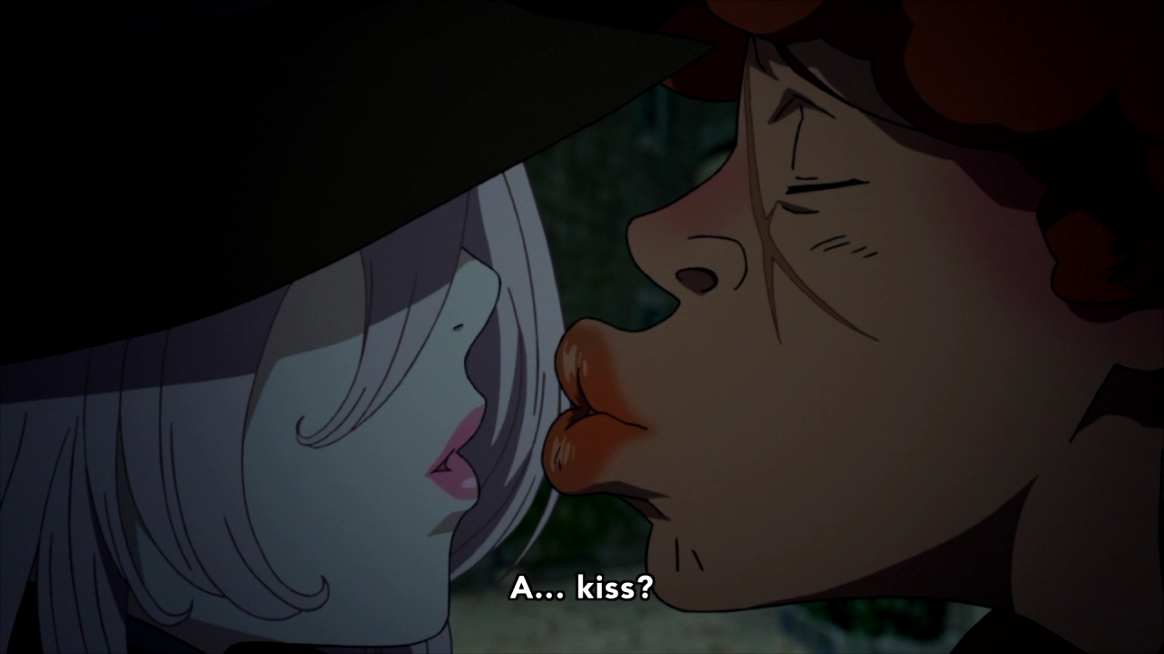
A good video game-to-anime adaptation has always been a rare thing to come by. We’ve seen trainwrecks like Devil Survivor 2: The Animation, Persona 4: The Animation, Persona 4: the Golden Animation, you get the idea. It appears that Rage of Bahamut: Genesis has broken this streak, at least from this first episode. Based of the social card game of the same name, Rage of Bahamut: Genesis surprisingly proves itself in every single category with its first episode, providing a subversion to a sub-genre plagued with terrible adaptations that shame its original product. Rage of Bahamut: Genesis should bring pride to its origin.
Amira, a mysterious pink-heared woman with a magic compass, is searching for a route to Helheim, the realm of the Gods. Favaro Leone is a cocky, eccentric bounty hunter who rivals with Kaisar Lidfort, the dandiest man never to set foot into space. Favaro claims to know a shortcut to Helheim, so Amira ropes him in to help her find the way. Along with these escapades, Favaro and Kaisar capture criminals and bandits and transform them into cards, signifying its origin as a social card game.
Studio MAPPA has already established themselves as competent animators with Kids on the Slope and Terror in Resonance. The CG use at times is a bit iffy, but overall, the CG was good for an TV anime production, and the normal 2D animation is fluid and quite splendid – at times blooming and brimming with life. The character design is typical but clean and nice to look at, and transition into the show well. The music fits the aesthetic of the show to a T, and the sound effects feel like some ripped out of a nostalgic cartoon.
The first segment between Favaro and Kaisar invokes imagery of a western chase sequence: music, dialogue, action, animation – everything is a spaghetti western through and through. The voice acting fits the characters’ personalities charmingly, with Hiroyuki Yoshino as Favaro and Gou Inoue as Kaisar being prime examples of well-cast characters. Favaro reeks of a new-age Lupin, with charm and charisma. Kaisar has the coolest pompadour next to Space Dandy and honestly feels like Dandy was ripped from his own space adventure show and placed into this medieval fantasy one. This is not a bad thing, naturally.
This show is ludicrously fun, and offers promise, intrigue and simple escapism. It is one of the best shows of the season in my opinion, and it is well worth 24 minutes of your time, and more to boot. It is, quite simply, a must-watch. — Mahomut
Second Opinion!
So, the best anime premiere of this season happens to be the one based off of some trading card game that I’ve never even heard of. No joke. It’s odd too, considering that this anime was not originally on my radar at all. There have been various other shows this season that I wanted to give a try, but aside from the excellent Fate/Stay Night UBW premiere, which in and of itself can be considered a sequel to an already excellent anime, none of the others really turned out to be shows that I would really want to come back to in the following week. I’m happy to finally be able to say that I’ve found an original series that has me eager to see more.
The funny thing is that, while I’ve been harsh on some shows because they didn’t do an adequate job of introducing me to their characters or teaching me about their universe in their respective premieres, the first episode of Genesis is largely guilty of the same thing. But it brought me to an important realization: substance always comes before exposition. It seems like such an obvious thing to know, but it’s shocking just how many series get it wrong. I’ve seen plenty if anime, none less this season, which are chalked full of exposition, and yet very little of it feels that essential to the main plot, and thus I feel like I’ve learned nothing. Meanwhile, the actual substance of the content, which comes in the form of character personalities, humor, action, and the general quality of what you actually see happening on screen, is severely lacking. Genesis basically manages to cleverly entice you into wanting to learn more about it by presenting you with high-substance material that will peak your interest and keep you hooked. It pulls this off successfully by basically making its first episode feel like the opening to an epic big-budget action adventure movie (a good one, at that). Hell, the animation, music, and general production values are basically as close to movie quality as you can get for an animated television series, and for large portions of the episode, I actually forgot that I was even watching a show.
Now, you could argue that the show is just merely flaunting its high-budget production values to impress the viewers, which is a luxury that several shows don’t have, and I can’t deny that there may be some truth to that, however I’d argue back that there’s more to it than just that. All of the best production values in the world would do you no good if your characters are flat, and in terms of raw engaging personality, our two male leads are overflowing with it. The opening scene alone where they have an amazing fight scene throughout the streets of a bustling medieval-style town showcases them perfectly. One is an ego-centric bounty hunter with an impeccable red afro named Favaro Leone (SEE, I can actually remember his name without having to look it up) who manages to perfectly balance the act of being a genuine bad-ass with also being the show’s main source of comic relief, and who we spend the most time with this episode. He’s fighting another bounty hunter by the name of Kaisar, who is far less cheery and has a clear beef with Favaro over an implied rough history between the two, which just goes to show that you can imply something nuanced in characters without having to rely on blatant exposition. We are also introduced to a thus far unnamed woman, who as far as we know “isn’t from around town” to put it mildly, and seeks guidance to an area known as Helheim, which she believes that Favaro can lead her to. She also happens to be endowed with bizarre magical abilities, as evidenced by how she easily slays a giant demon summoned to take out Favaro like it’s no one’s business.
Yeah, there are demons in this action adventure show too, and hell, the opening scene is an out of context segment showing an army of knights with insane powers fighting a giant fucking dragon. It’s like the writers decided to take everything that makes fantasy and adventure awesome and put it in a blender, and then make an anime out of that, which is pretty much what we’ve got right here. While there’s no guarantee that this show can remain so amazing and deliver a satisfying payoff for what’s been presented so far, I can certainly say that I’ll be sticking with it for at least a while, if not for the whole adventure. On a level of sheer excitement, this is by far the strongest premiere of this season, and quite frankly puts its competition to shame. Highly recommended. — Dr. Ensatsu-ken
Selector Spread Wixoss

Puella Gamer Yugioka
Batteru! Batteru! Batte-oh god not this horseshit again… Yup Okada couldn’t be bothered to finish her cheesy Yugioh/Madoka mashup last May and so, like many other virulent plagues with a high mortality rate currently hitting Dallas, Texas (HAHAHA! TIMELY!), our beloved Wixoss has gone from patient zero to a full-on airborne contagion. Call the CDC, there will be no survivors.
As you may recall, Wixoss is a popular card game in a creepy Tokyo prefecture (as opposed to the REAL Wixoss game which appears to be even less popular than Buddy Fight). While most play the game casually, completely unaware of its dark power, several young girls between the ages of 12 and 17 have been picked to be “Selectors” by receiving special cards (known as Lrirgs, cue groan) that are actually alive. If you win three battles (BAAAAAAAAAAATTTTTTERUUUUUUUU!), you get your wildest dreams to come true and its all happy time, lose three times and you don’t get to play anymore and a couple hired goons break your shit. Oh well.
To be fair, as last season suggested, you DON’T wanna win this game. Being a Madoka ripoff and all, there has to be some sort of Faustian trap for our heroes to step into, and in this case, instead of becoming soulless husks, the “winners” become their cards (Get it? Because Lrig is Girl spelled backwards?!?! Remember that groan I cued…) and the girls in their cards gets to fulfill their wildest dreams FOR them! AHAHAHAHA…I hate this show. Last season, our three main heroines: Ruko, Yuzuki, and Hitoe, each ended up getting screwed over by this horrid little game somehow. Hitoe lost three times and her dream of having friends ended up with her becoming comatose for a couple episodes and then losing her memory and becoming a cold angry bitch…then it turns out she was faking it the whole time because…how am I supposed to know? Meanwhile, Yuzuki actually won her games but was helplessly stranded as her dirty skank of a Lrig got to fulfill her dream of getting her oniisan to notice her like only a sempai would. Ruko, being the main-main character as far as this show is concerned, set out to make her wish the ability to release all the girls from their cards. That didn’t go so well when her increasingly autistic Lrig Tama, finally refused to batteru allowing the evil Iona-San (duhduhduh) her wish of having Tama as her card instead. And that’s all you need to know about what happened last season on Wixoss!…god help us.
That finally brings us to this season and well Ruko and Hitoe, as the only important survivors of season 1, aren’t batteru-ing any more. Unfortunately, that isn’t enough from keeping Chiyori, the light novel obsessed dummy who was a one off gag character in Infected, from blindly trying to challenge the two despite every possible thing they could do to get her not to. Meanwhile, evil Iona-San (now Ruko’s Lrig following her quasi-defeat last time) pondered her inability to get Ruko to batteru as a means to reunite her with the now-lost Tama. And that’s it really, with most of the episode spent on that good ol fashioned slice of life shlock that Okada is known for shoving down our throats, even if this one is supposed to “creepy” and “unnerving” (its not).
Essentially though, this is a recap episode. There’s a lot of recycled footage and a lot of infodumping going on. That’s to be expected though as its been about three months since the last episode of Wixoss aired and it wasn’t very memorable back then either. Its annoying that Okada has to dig out one of her more useless characters to use as the medium for that though, and Chiyori really doesn’t add anything at all to the proceedings. Hell I’d take crazy Akira over this bubble headed moron any day.
Really it is just more of the same. Lots of moe, lots of forced darkness, lots of shameless stealing from Madoka. The main difference being of course that Not-Homura is now Not-Kyubey. If that’s an improvement than damned if I know. There’s still a small chance though that Spread might turn around the so bad its hilariousness that was Infected with all its batteru, batteru, batteru. Maybe then producing… not a good show but maybe an ok one.
Unfortunately though, our writer is Mari Okada, and I’ve seen this movie before. — Lord Dalek
Second Opinion!

So, hey, um, dudes. Last time on Wixoss, Homura fulfilled step one of her master plan… to become a children’s trading card. This time on Wixoss, more of that Okada magic penetrates your sense orifices with that gooey Okada charm. I could probably go on another tangent on why Mari Okada is the current cancer that is killing anime now that moe has long since been in remission, but that’s overdone. This time, I could compare this with its competitors in the card game anime market. Beyond all of those attempts for feels and familial angst that very few families actually go through, this is meant to be a show that sells toys. And does this achieve that job? No. No, of course not.
I can imagine a tired parent confusing Wixoss cards for some Black Rock Shooter thing and buying it for their child in an absentminded attempt to bond. The aesthetics ape from so many other sources that it feels like those chain stores that sell Buddyfight cards because they’re too poor to deal in Yu-Gi-Oh or whatever card franchise the kids are smoking nowadays. While it may be admirable for the series to put more care into the characters than into the merchandise that care doesn’t translate into genuine effort causing the girls in the show to feel as shallow as the game they’re playing.
And as stupid as the plots get in Yu-Gi-Oh or its various successors, they did make their material interesting enough for some kid with a low attention span to want a piece of that action and buy the cards. In this episode and many from last season however, it’s just moping. It’s moping over the main grab of the series with few attempts at real experimenting with the genre, with said attempts being taken fresh off another show about emotionally abused girls. What I’m saying is that it feels stale, something from a writer who seems disinterested in playing with the toys she’s given in favor or shilling out another soap opera like Nagi no Asukara. — Bloody Marquis
The Seven Deadly Sins
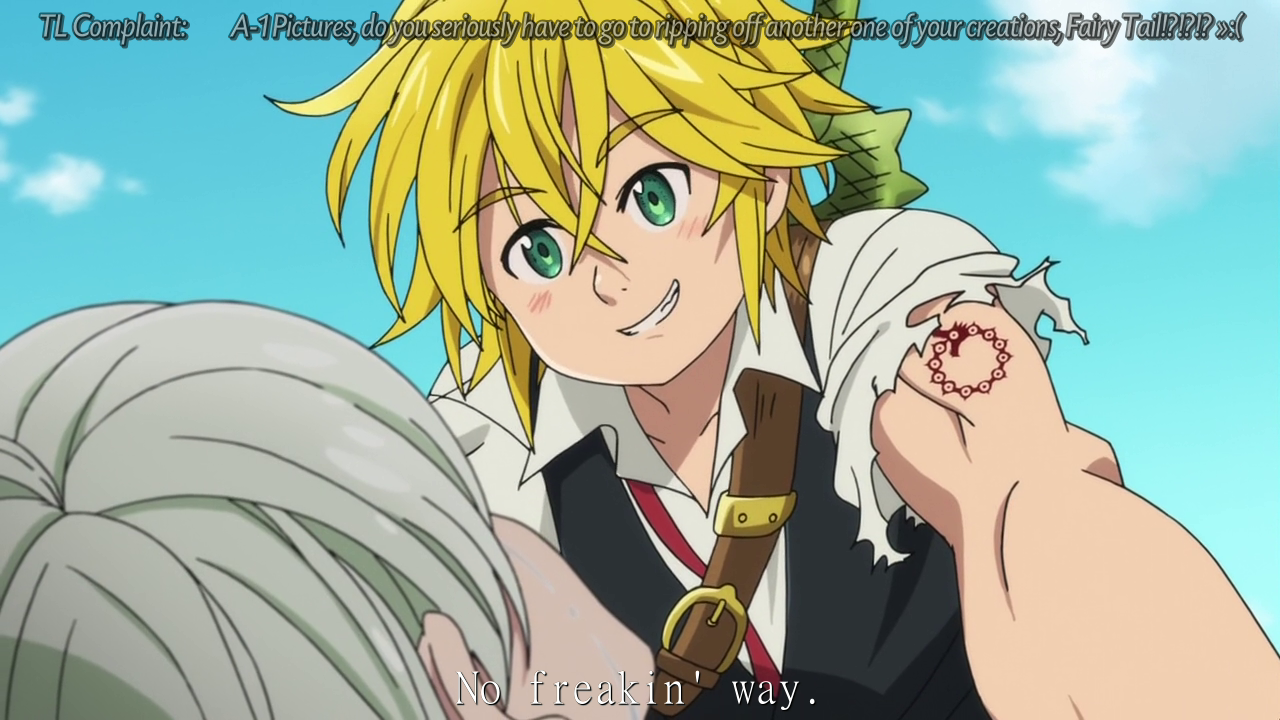
Hey the subbers wrote my entry for me! (Technically Nakaba Suzuki's to blame for that, Mr. Fan-Subber.)
Usually at this time would come the latest installment of Magi: The Labyrinth of Magic and me waxing over Alibaba’s always comedic worthlessness. However due to Ootaka taking forever to finish that mixed bag that was Salomon’s doomed quest in Alma Toran (it ended incredibly well but lord was it a chore getting there), instead A-1 Pictures offers us The Seven Deadly Sins! Nakaba Suzuki’s classic shonen manga adventure of a boy, a girl, a talking animal, and a legendary guild of outca-wait a minute I’ve seen this show! You’re not foolin me A-1, I may be only able count the number of Fairy Tail episodes I’ve seen (all mostly involuntary) on two hands but I remember that first episode pretty damn well and boy do the similarities stick out like a sore thumb.
Here Lieth The Plot: In the land of Brittania (lolz Ultima), the once high and mighty Jed-er… Rusty Knights were wiped out ten years ago by the significantly more evil Holy Knights. However seven survived, proceeding to go on a killing rampage that has become legend in the Liones Kingdom. While it is generally believed that the so-called Seven Deadly Sins were ultimately killed themselves, their legend still strikes fear in the hearts of the Holy Knights. This brings us to Princess Elizabeth who seeks the Seven Deadly Sins to kill the Holy Knights because the Holy Knights are TOTALY NOT SITH LORDS…totally. Her quest brings her to the tavern of an unnamed teen and his talking pig. Said teen through a series of misunderstandings, close shaves, and a run in with the bastard lover child of F/Z Rider and Freddie Mercury, eventually reveals himself to be the first of the Seven Deadly Sins, Meliodas the Sin of Wrath complete with a tattoo of Uroboros that is TOTALLY NOT IN THE SAME EXACT SPOT AS NATSU’S…totally.
Getting past the Not-Fairy Tail (or now that I think of it, Not-Star Wars) aspect of the show though, this is a pretty standard shonen show. Cute girl meets goofy guy, goofy guy turns out to be super-overpowered shonen protagonist, “let’s go get Naraku next time!”, rince repeat. Its pretty damn tedious for me to watch, and its especially tedious when none of the characters ever come close to being marginally interesting. The best character is that of Meliodas’ talking pig Hawk and only because of how he/she/it ends up being the Boston Butt (HAHAHA! I’m Dan Schneider!) of many a food joke. Even that though loses its luster pretty damn quickly and by the end of it I had no desire to watch the next episode, unless of course I was forced to watch the utterly repulsive Cross Ange instead.
Also for a final laugh, this is not on Crunchy, the reason being that Netflix decided to buy it instead. So expect to see the Seven Deadly Sins take America by storm… half a year from now! — Lord Dalek
Second Opinion!
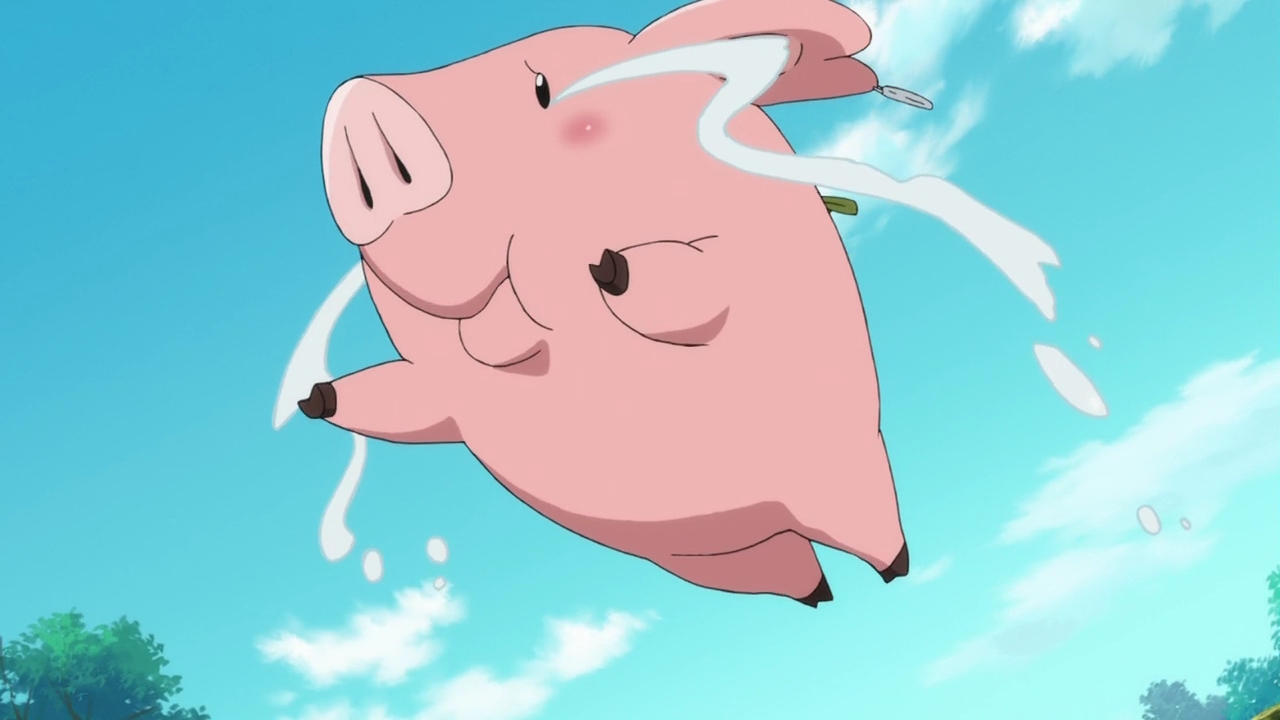
Amagi Brilliant Pork
Stop me if this premise rings a bell. A young girl who ran away from her home is searching for an infamous band of warriors. She meets an aloof young man who is accompanied by a cutesy animal sidekick. She ends up getting in trouble with some crooked mooks and gets bailed out by the kid. Then she finds out that the kid is a member of the aforementioned group she was looking fo-OH MY GOD THIS IS FAIRY TAIL ALL OVER AGAIN AAAGGGHHHHH!!!!
The most remarkable thing about the first episode of The Seven Deadly Sins is that there’s absolutely nothing remarkable about it. On the contrary, everything presented here amounts to tired and rote cliches that might be of interest to newbies who’ve never watched a battle shonen anime before, but are completely uninteresting to just about everyone else. Normal person meeting weird person and going off on a journey? Essentially the first episode of 95% of all battle-shonen. A carefree and young but insanely strong goody-good protagonist? You gotta love them Goku clones. Annoying comic relief animal sidekick? I’ve never seen a more blatant rip-off of Fairy Tail‘s Happy. Boobs An obligatory and completely useless female lead who’s only discernible role is to spout exposition? Yup, and this one’s plenty bland to boot! I could go on, but I think you get the picture. Sins cobbles together all the most boring elements of modern battle-shonen series and runs with them together under an equally uninspired premise.
Arguably, it’s not so much the cliches themselves that are the problem. With good presentation even a battle-shonen show can spin familiar tropes into something fun and fresh. Sins, sadly, doesn’t do that. A likable and interesting cast of characters are essential in making one stand out against the plethora of battle-shonen out there, but right now Sins‘ characters are just the archetypes of the same kinds of characters we’ve seen countless times before and nothing more. The setting is a sort of medieval fantasy world that has talking animals and a quaint rustic feel, yet at the same time a nagging sense of familiarity leaves little of interest to note about it. The story is as basic as a battle-shonen premise can be, being an adventure journey to look for old comrades and band together to fight a common evil. The twist is so typical that you can call it a minute into the show if not sooner, with the supposed notorious criminals being the heroic characters while the allegedly authority figures are blatant and one-dimensional mustache-twirling bad guys. You’d think that with the heroes called named after the seven deadly sins they’d at least be edgy fuckers, but nope, Meliodas is your standard shonen protagonist. He’s not obnoxious, loud, or annoying like the worst of the lot, but at the same time, there’s just nothing about him or this series that stands out.
A smart and creative director could still make all this a lot more fun to watch. Unfortunately, Tensai Okamura’s directing is possibly less inspired than it was in Blue Exorcist, and the episode moves along at a slow and steady pace that bores rather than excites. Compare this first episode to Magi‘s, which was considerably more fast-paced, and established it’s premise and characters much more effectively and left a far greater impact as a result. Sins‘ premiere doesn’t do anything particularly bad with it’s pacing, shots, or animation, mind you, but it also doesn’t do anything particularly interesting or memorable either. In the first season of Magi, A-1 put in actual effort and rewrote the story to remove some of the source material’s initial warts as well as reworking a few pacing and character details. Their version was ultimately an improved rendering of the same events and story, and opened with an engaging premiere that made sure to show the potential of the series and present an enticing hook to interest viewers in seeing more. But Sins doesn’t take any risks to change things around to make what could work about it shine. The premiere is a straightforward adaption of the first chapter of it’s source material, showing no effort or attempt to improve on it’s weaknesses. By doing nothing to help hide the fact you’ve seen all this before, it consequently carries a by the numbers, been-there done-that feeling throughout, and worse, reads as a rip-off of it’s more popular sempai in Weekly Shonen Magazine, Fairy Tail. Sure, the similarities between the two are fairly general, but when even the fan-translators bothering to sub the show get annoyed enough to point them out, you know it’s doing something wrong.
Overall, the first episode of The Seven Deadly Sins is not bad, not good, but simply another typical and generic battle-shonen series premiere that ends up falling on the boring side of things when all is said and done. Having wrote all of this, it might come across that I hate and would not recommend this series to anyone at all, but that’s actually not true. In fact, I’m caught up and keep up with the manga?and I like it. The Seven Deadly Sins is yet another battle-shonen series that starts off as nothing special and rather dull, taking a while to find it’s niche and groove, but eventually does find a way to make itself stand out. What improved Sins from it’s generic beginnings was the addition of more interesting characters to round out the main cast, much appreciated development of the existing ones, and the convincing relationships between them. As I’ve said before, enjoyable characters can considerably improve even the most basic of battle-shonen premises, and Sins‘ cast, while not particularly complex or necessarily unfamiliar, are a solid and well-written bunch that do little to annoy and a lot to like, and are characters that you can get invested in, and thus invested in the story. Sins does not just improve on the character front, though; it’s world becomes a more intriguing and interesting place to learn about as fantastical beings, demons, and Arthurian figures start revealing themselves alongside a neat mythology, and the story, while nothing revolutionary, is well-written for what it is and manages to avoid the trappings of lesser series in the genre by following through on strong set-up and foreshadowing and pulling scant to no bullshit plot developments for the sake of easily resolving problems. I wouldn’t say it’s a great series or does anything new that sets it apart from others in it’s genre, but I do think it is a solid and very enjoyable one nonetheless. If this anime remains a straightforward adaption of the manga, and it’s likely to, then it too will find it’s groove and become much more fun to watch soon enough, and similarly be a solid battle-shonen anime.
But even though The Seven Deadly Sins will “get better,” I still find this a hard series to recommend for most. While this is easily the better of the two battle-shonen shows that have come out this season, that isn’t saying much, because as a Toei production, World Trigger was doomed to be an irredeemable piece of shit from the very beginning. As far as action-adventure shows in general go, Rage of Bahamut provided an excellent, engaging romp in it’s first episode and was handily more impressive and interesting than Sins‘ premiere could even hope to be. Fate/Stay Night and Parasyte, though of different genres, should also provide excellent action sequences with strong character writing and a good story. So while Sins is not a bad show, there are just better options this season if you are looking for a good action series. I’m also of the opinion that if you don’t enjoy something from the onset you should’t feel obligated to continue it any further. So if you watch the first episode and don’t like it, then by all means, I don’t think you should bother continuing with it, especially if you are bored with or hate standard battle-shonen series in the first place. However, if you do enjoy good battle-shonen series, are looking for something new to watch, want a decent series to hold you over until the return of Magi, and have a bit of patience, then The Seven Deadly Sinsshould prove an enjoyable and rewarding experience overall. It’s just a shame that the bulk of shonen anime adaptions continue to be too safe for their own good, especially when they have the opportunity to make a decent series into something so much greater. — Cartoon X
Terra Formars
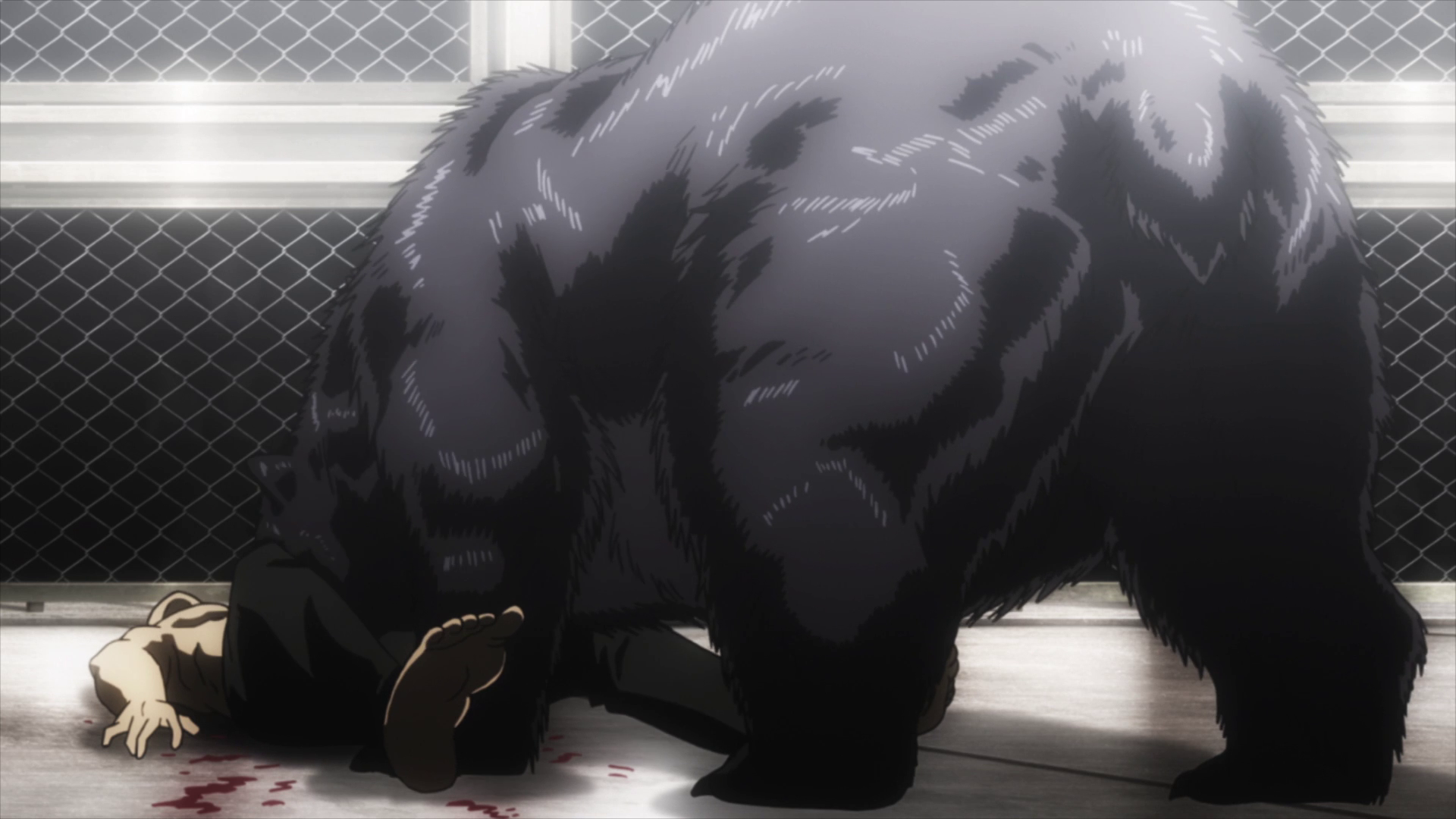
He's bear-y good.
Terra Formars is ostensibly a show where baras beat up racially insensitive cockroach men. I know this because that’s what the OVA episode that came out a month ago (EDITORS NOTE: August) was about. This episode on the other hand is about how Jin from the Tekken Live Action movie gets his package bitten off by an American brown bear named Brian-kun…..I got nothin. Oh all right, there’s something about space AIDS and regular video game Kazuya from the OVA is back except now sporting a goatee (SPOILERS!!!!). Otherwise its just an excuse to get our latest half-man half-ant onto Mars to beat up roaches because whatever.
The OVA series of Terra Formars was one of if not the most insanely disgusting and disgraceful animations to grace my screen this year so I was naturally expecting more of that. Sadly(?), due to much more stringent television censorship standards, this is not exactly what we get from this series. Oh sure its fun/horrifying to see our half-ant hero Hizamaru litterally rip a brown bear in half, the problem is we can’t see it since the censorship blackening leaves even less on screen than your average episode of Tokyo Ghoul. So we can only imagine how silly this must all look when it hits dvd (not like I care).
The second half of the episode is nowhere near as hilariously terrible as the first. Most of its just infodumping as well as introducing a bunch of cliched character designs who will be serving as our canon fodder for this series. Since I’ve watched the equivalent of two first episodes of this show, I already know that these losers don’t have long to live so I can’t get comfortable with anybody. In the end, Terra Formars is kind of a mixed bag. Its terrible yes, but its just not terrible enough to keep me interested. I guess that’s an …improvement? — Lord Dalek
Second Opinion!
Look, Ma! It’s another one of ‘em Bleak, Action, Anime with an elite, but underpowered, group of humans against a savage, uncaring, inhuman, foe!
Hot off the heels of the prequel OVA, Terra Formars the TV series, gets off to a rather humdrum start after making a weird first impression. How weird? A Japanese man faces off against a large bear (literal not the poofy kind) in a cage match watched by rich people who look like they’re all in their vinegar strokes phase of orgasm. After getting his dick munched by the bear, he kills it off, has a sad because whatever he was fighting for is dead, gets picked up by mysterious organization and now they’re getting their asses to Mars.
Unless you’ve watched the OVA, you wouldn’t know how very lethal the Terra Formars are, as they’re merely revealed but not showcased in this first episode. The episode eventually shifts from weird to mundane as expository dumps take way, meaningless lingering and conversations between characters take place, and after nothing happens, THEN they leave for Mars. Maybe this is for buildup but for some reason I’m not at all endeared quite yet. It ain’t like Attack on Titan where you actually had a good idea of the ominous nature of the Titans and an eventual reveal about how ruthless they are. Here? Oh it’s a black version of The Tick.
It’s rather lamish, but I’ll have to reserve judgment until they meet the Terra Formars. Hopefully it’ll be the weird kind of stupid bad that’s good. Maybe. I dunno. All I know is that I may have to make another intro done to the theme of The Tick. — The Juude
Tribe Cool Crew
PARENTAL GUIDANCE WARNING: The following is the single whitest thing you will ever see on Animation Revelation. Viewer discretion advised…
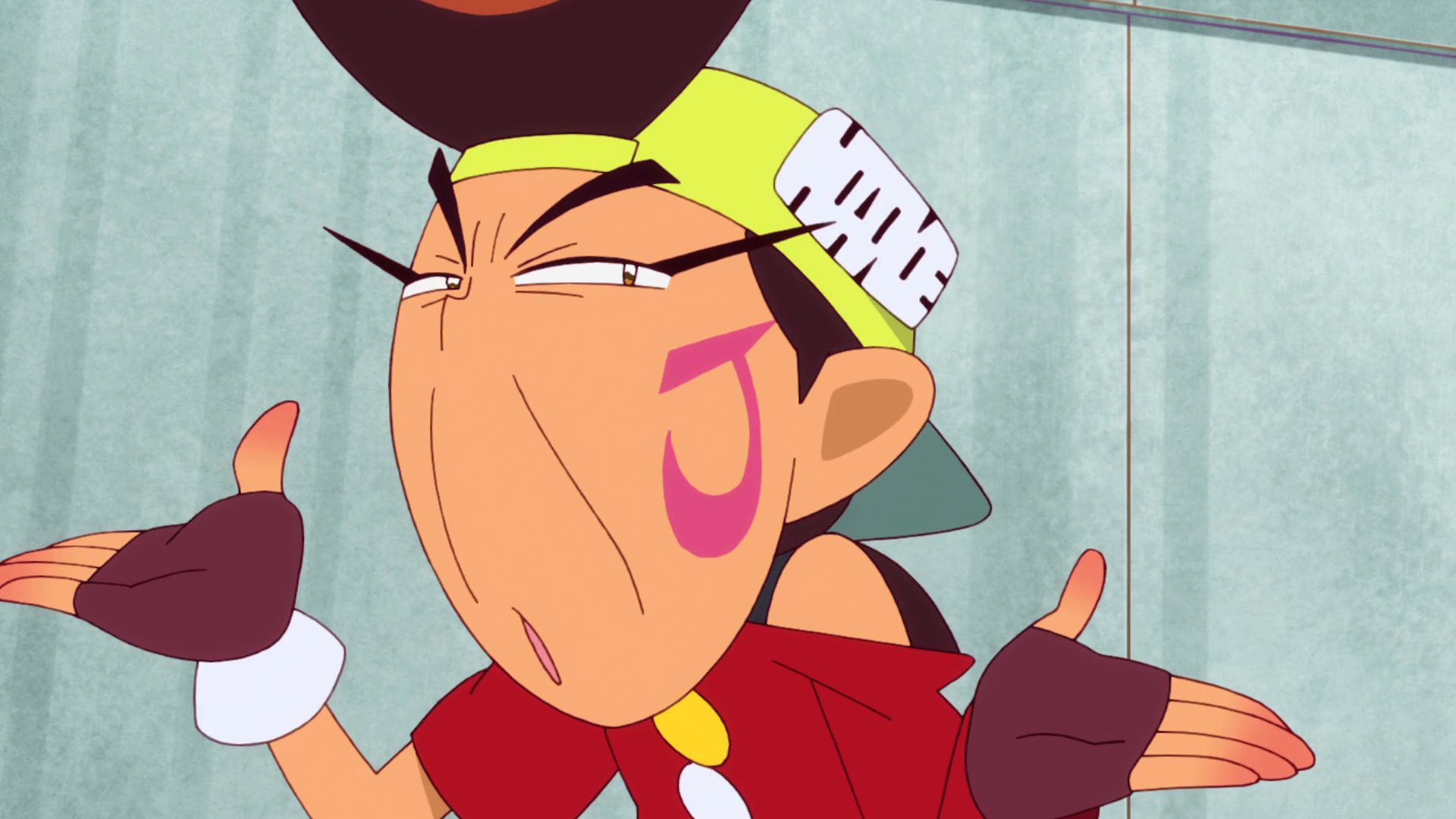
AW YEA, RESPECK!
Yo! Dis be hippest animu of seazon, dawgs. All hip hop no plot! Screw dat Hanayamatagatari sheet, we keekin it old skool with da KOOOL KREEEW! Diz be sad hatwaming tale of white rice boyee who drinkz nuttin but CODE RED before poppin in sum SKRILLLEX! He stalked by some girl with da anime swag benjameens. Then dey dance! And itz all cgi because SUNRISE IZ DA BEST! GUNDAMN RESPECK YO! CHECK YO ROOTS PRIVLGE!
Now I not be the kind of homie who which does this animu sheet, but Tribe Kool Krew? Aw yea. DAT DANCIN ASS SO MUCH CEEG! Danzin so awesum, dey use the same animu gain 10 minutes latr. Dats so fresh. Diz is cleray da first animu dat appeelz to my generayshun. Az a proud 37 year old blanco from South Beech Miami, I too feel reprezzed by da maaaan. HEY YEW DON’T TAKE MY BODY PILLOWZ AWAY MAAAAAAA!
SowhatwasItalkinabo…OH YEA KOOL KREW IZ DA SHIZ BOMB YO! Go daun to Chinatown and by a copy to go wit yo plate of MooGoo. Bye y’all! — DarkSydePhivator
Actual Opinion!
This is Aikatsu for boys… discuss. — Lord Dalek
When Supernatural Battles Became Commonplace
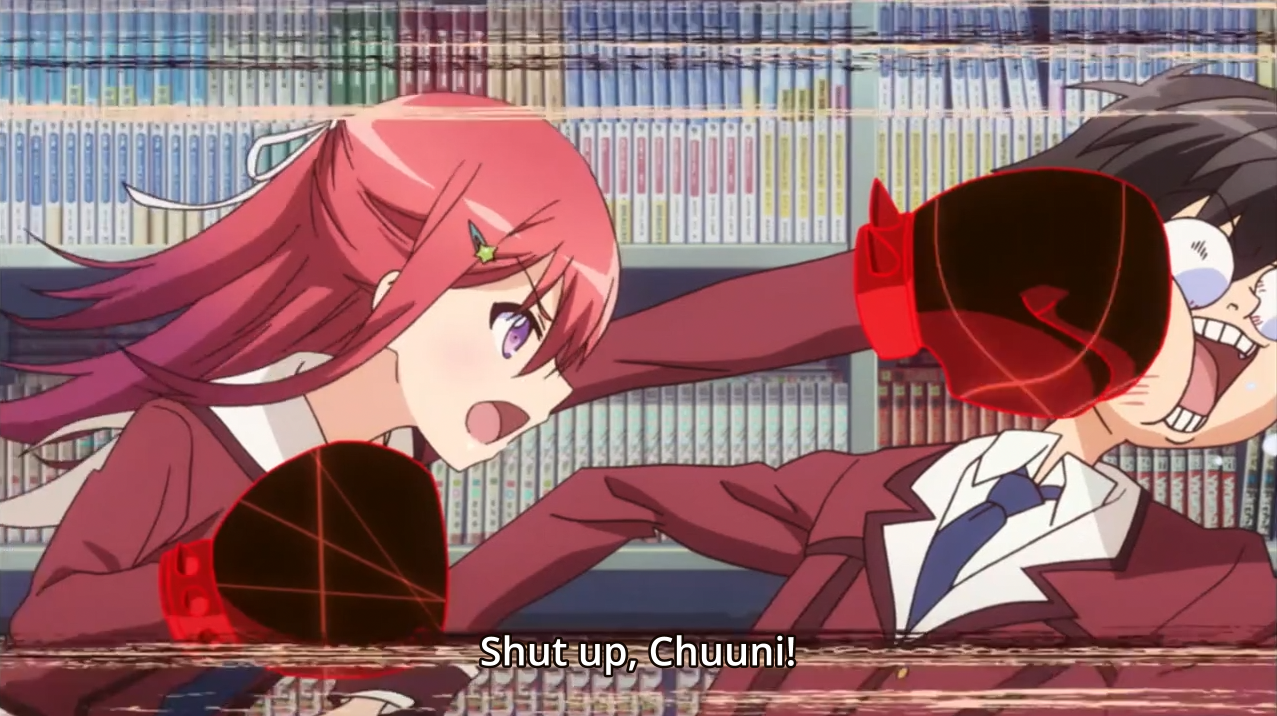
Anime is no longer saved.
Trigger can finally be considered a full-fledged anime studio. They’ve hit all the bases at this point: they’ve made an original anime everybody liked, an original anime that was incredibly polarizing, a barely-animated web series, and now, finally… a light novel adaptation. A generic, boring light novel adaptation filled with lazy comedy, uninspired characters, dull artwork, and unnecessary exposition. It’s not complete garbage by any means, but it is thoroughly mediocre, which is arguably worse. There is simply nothing at all interesting or good about When Supernatural Battles Became Commonplace, except for that title, which I actually kind of like.
The story goes that the five members of an unnamed school’s literature club suddenly develop superpowers one day and then… don’t do anything with them. This premise is actually fairly unique, and if this show were an original Trigger production, I could easily see it being at least mildly enjoyable. Unfortunately, it’s based on a light novel, and I’m pretty sure only like 15 of those have been good ever. The world of this anime (henceforth referred to by its shortened Japanese title, Inou-Battle) is uninteresting, inhabited by the same cardboard cutout protagonists you’ve seen in every LN-based series to date, and is characterized by a sleep-inducing cheapness in both writing and visuals to the point where you can tell that nobody who worked on this production truly cared about it. Well, the music’s okay, I guess, but everything else about Inou-Battle can be succinctly described as “fucking nothing.”
If I were hard-pressed to mention one thing I legitimately enjoyed about this episode, I suppose I’d have to admit that the buildup to Andou’s power being worthless was actually somewhat well-done; moreover, his reaction to losing it was genuinely funny. That’s it. No, I did not like the Kill la Kill reference. It was random and out of place, serving only to make an already groan-worthy scene even more insipid.
I have nothing else to say about Inou-Battle. It’s boring and seemingly without merit. Avoid this one. — Foggle
Second Opinion!
Ummmm….Yeah, so I don’t really know what I was expecting from this show to begin with. I must admit, I just saw the name “Trigger” attached to the project, and thought to myself “Oh! Those are the guys that did Little Witch Academia and Kill La Kill! This should be as good as those!” What I got was….well, I don’t really know.
We have 5 characters (as usual, I can’t be bothered to recall any of their names) in a literature club who seemingly get superpowers one day out of nowhere, ranging from summoning a useless dark flame to being as overpowered as stopping time, or in another case, basically just ripping off Avatar with a user who has control over all of the classical elements. But, alright, that could still make for an interesting battle series. However, the tone of this episode, and seemingly what the whole series will go with, is an overly comedic one. Alright, that can work as well, but the jokes presented here are just safe, predictable, and feel like something that you’ve probably already seen in other anime before. In short, it’s trying really hard to be funny, but so far, it really just isn’t.
You’d at least expect some really fluid animation and a kick-ass soundtrack out of a Trigger production, but this anime disappoints in that regard as well. To be clear, there’s nothing wrong with either. They are both fairly serviceable aspects of the show, but in no way do they stand out in the way that previous Trigger products have. Really, that logic just applies to the whole show, or at least this premiere episode. There’s really nothing wrong with it, but simultaneously, there’s nothing truly worthwhile about it either, unless cliche and boring anime comedy is your thing. So, essentially I’m just left a bit disappointed, but perhaps I’ve learned my lesson of not just assuming greatness from something just because of what name is attached to it. — Dr. Ensatsu-ken
Wolf Girl and Black Prince
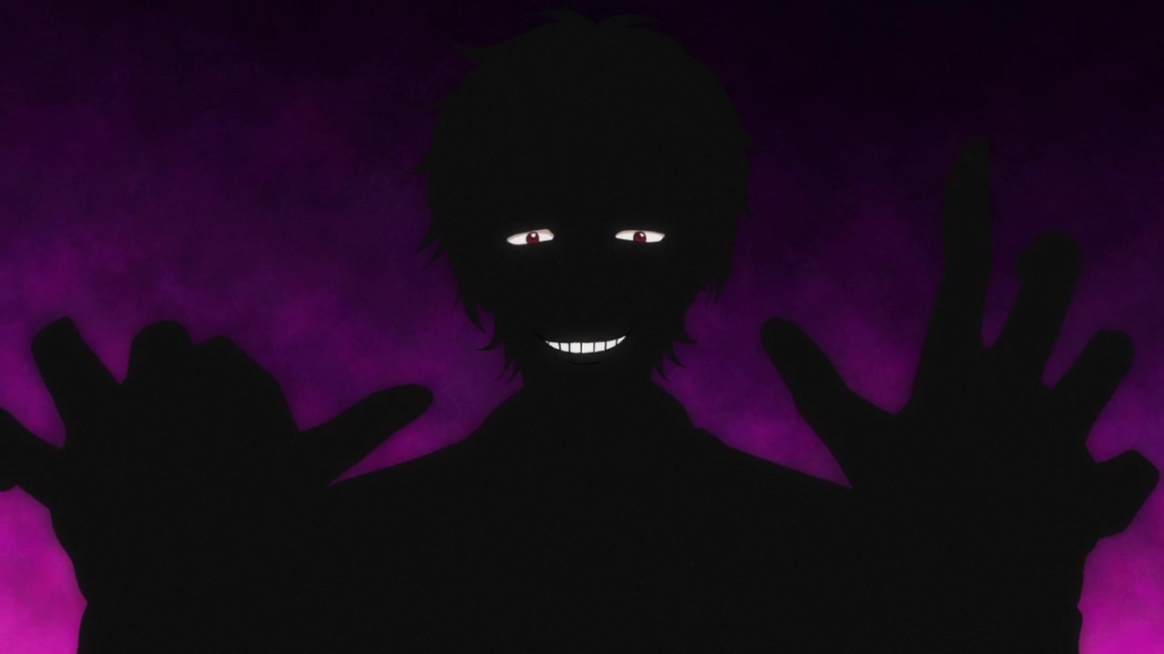
I honestly have nothing much to say about Wolf Girl & Black Prince. It is not captivating, nor is is desirable. It is not romantic in any way, shape or form. It is the most boring romance anime I have watched all year. It is also the most exploitative romance this year. It honestly astounds me how a person can write, direct and animate this and not feel ashamed of themselves in the process. This makes Fushigi Yugi look like Monthly Girls’ Nozaki-kun. This makes most romance anime look like Monthly Girls’ Nozaki-kun.
Erika Shinohara pretends to have a boyfriend to appeal to the masses of highschool students. With her friends starting to realize she is lying about her significant other, she takes a picture of a random boy in the middle of the street to provide evidence. It is revealed the boy is Kyousa Sata, the prince of their highschool. Explaining the situation to Kyousa, Erika becomes the “wolf girl” to Kyousa’s “black prince”, who reveals his plan to emotionally manipulate and physically abuse her, and call her a “dog”. Thus begins the “plot” of Wolf Girl & Black Prince.
Apart from the abuse aspect, this show honestly comes off as dull, monotone and boring. The characters are one-dimensional and dull, the manipulation of the female protagonist turns you off (as it should), the music is dull, the animation is dull, uninspired and looks like a low-rent Zexcs show, everything in conclusion is just….dull. Say, “I Love You.” was a hundred times more interesting than this trashcan. Hell, this makes Fruits Basket look good in comparison.
Who enjoys an abusive relationship? Why does anime have a fetish for it? Why was this, and last year’s Amnesia made? Who gets off to this, and who enjoys this? I have so many questions, and 23 minutes of my life would be better off watching Sakura Trick than thinking about this absolute waste of time. I am better off watching Nagi-Asu: A Lull in the Sea than this. I am better off watching most shows than this. You’re better off, too. Don’t do it.
If it wasn’t for Cross Ange: Rondo of Angels and Dragons and In Search of Lost Future, Wolf Girl & Black Prince would honestly be the worst anime of this season. — Mahookami
World Trigger
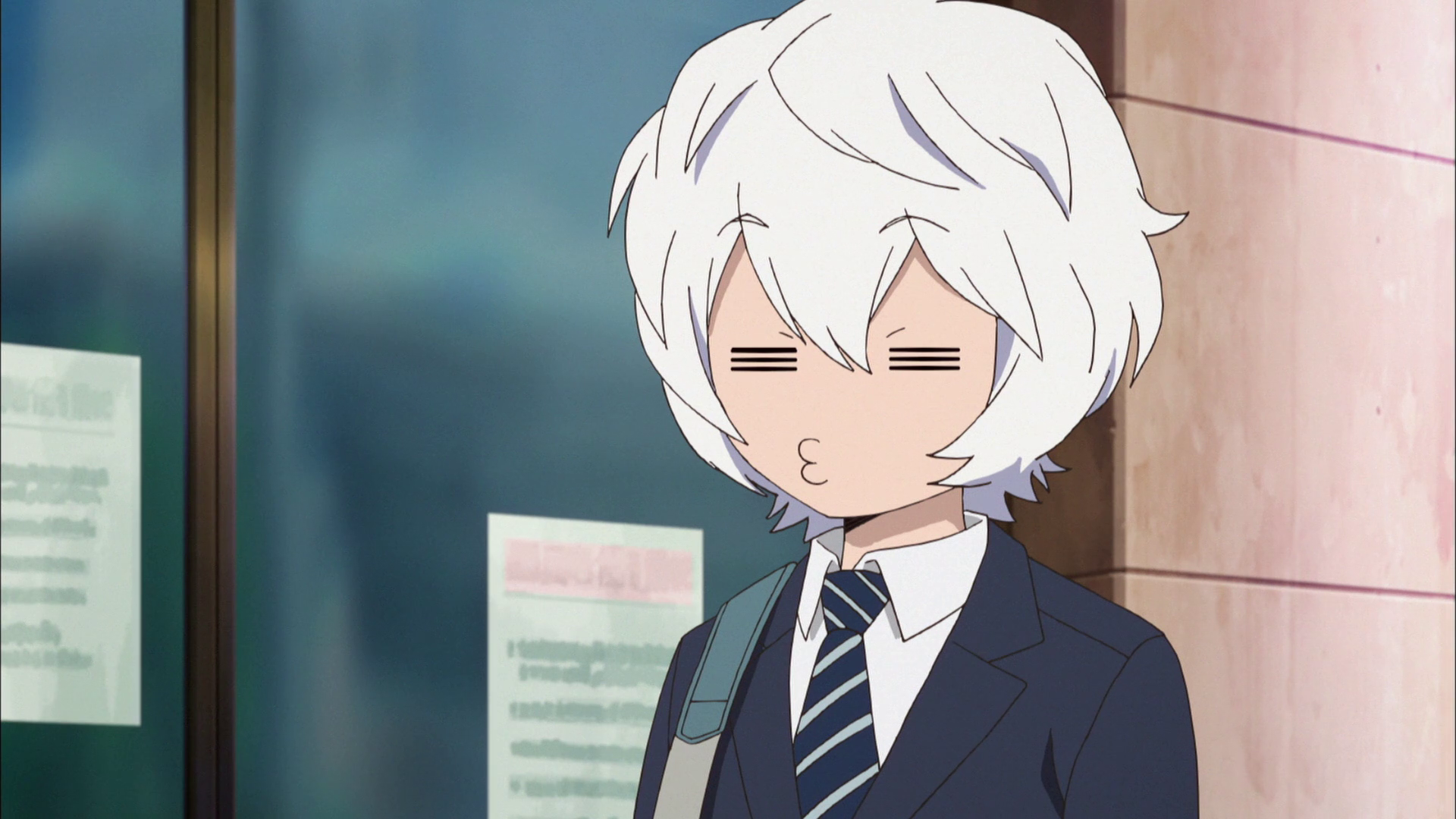
Pucker up.
For reasons unknown, giant albino space iguanas known as Neighbors have begun to invade Japan but mostly just the city of Mikado. After a series of gruesome attacks left much of the population dead, a group of alien fighters known as Border has been established to fight the menace using counter-technology called Triggers. Surprisingly, they have been pretty damn successful, to the point where Neighbor attacks have just become a forgettable daily nuisance. Things get complicated though with the arrival of Yuma Kuga, a mysterious transfer student with white hair who has a trigger of his own. Turns out he’s actually one of the space aliens and a total dickwad to boot. There’s also Osamu Mikumo, a totally worthless guy who joined Border after being rescued by some guy he hero worships in traditional Shonen Jump show protagonist fashion. How will this pair fare against the space iguanas? How the hell should I know!
World Trigger feels like kind of an odd duck among the slew of Shonen Jump action schlock released over the years. The protagonists are a pair of physically limp guys with no special characteristics other than their magic transformation weapons, only one of which (Yuma’s of course) actually works. In a way its actually closer to a series like Magi in that it places its story on considerably undertrained and underprepared protagonists who naturally grow to like each other through their shared experiences. The problem though is I couldn’t give a crap about either of these two guys. Yuma comes off as smug and incredibly unlikable which is apparently supposed to translate to his alien side but only comes off as smug and unlikable, and Osamu is just a bland punching bag for the abuse of bullies.
This is a Toei show and as usual its not that much of a looker. I watched this about an a hour after viewing the eye orgasmic Fate/Stay Night [Unlimited Blade Works], and the transition from that near movie quality to this no-fps production felt like crashing into the atomsphere on a incinerated space station. To be fair though, this is a kids show airing at 7 AM on TV Asahi and not some production that requires much effort. Still its shows like this and said lack of effort that give Shonen Jump its reputation of bad, low budget entertainment that goes on and on and on.
There is some potential here though and maybe World Trigger might become interesting down the line. At the moment though, I couldn’t care less about it. — Lord Dalek
Second Opinion!
Another season, another Shonen Jump manga for Toei to fuck up. This time I made an exception and went against my rule of not looking into anything beforehand, and actually read some of the manga. I did this precisely because it’s only fair, since Toei can’t be trusted to actually do a good adaptation of anything these days. For what it’s worth, while I don’t think incredibly highly of what I’ve read of the source material so far, it is decently written and does get a bit more interesting later on down the line. But, that’s neither here nor there. I must assess how World Trigger fairs as an anime, not a manga.
Well, as for the plot, the first few minutes are devoted to a narrator blatantly throwing exposition at us over a glorified slideshow (I’m not even exaggerating, here). We learn that there are strange other-worldly creatures made up of bad CG effects called “neighbors” (creative name, I know) that attack Japanese cities and cause much death and destruction. An elite defense force named Border has been established to deal with this ongoing threat. It’s an invasion plot that has been done to death before, no less in this medium, though to its credit this series has the distinction of not being overly dark or even taking itself too seriously to the point of neglecting any humor, of which this has plenty of. In that regard, it feels refreshing to see this type of story done in a way that doesn’t feel up its own ass in pretentious drivel.
Unfortunately, that’s the only semi-praise that I can give to this premiere episode. We honestly don’t learn all that much about our two main leads other than their names and roles in the story. Osamu is a seemingly average student who happens to also be involved with Border, and he quickly becomes responsible for our other lead Yuma, who claims to be a foreign transfer student, but of Japanese heritage. Yuma also has a strange AI companion that talks to him, and that presumably nobody else can see since it floats next to him in the open at so many points in time. Both characters are bare-bones so far in terms of personality, with Osamu being the orderly one and Yuma being the goofy and mysterious one. Through these characters, we also learn about the titular Triggers, which are basically like Sentai armor power-ups, except in the form of much more boring looking jump suits.
As far as production values go, it’s Toei, so naturally they spared no expense….for themselves. What I mean to say is that they literally cut corners wherever possible to save on expenses, even for their premiere episode, and even regarding the lackluster opening animation piece of this show. The soundtrack is forgettable to the point where I can’t even recollect if any music played during the episode in the first place, and the animation is passable at best, and feels like you’re watching a PowerPoint presentation at every other point in time. As anime premieres go, this one is really weak, and given Toei’s track record, it’s only likely to get worse.
So, is World Trigger a shonen series worth checking out? Well, if you are OK with ridiculously cheap animation and don’t care about obvious pacing issues, then maybe. For everyone else, just stick with the manga. — Dr. Ensatsu-ken
